本帖最后由 暗黑的破壞神 于 2015-9-27 12:13 编辑
------------------------------------------------------------------------------
第 6 話 突入! ユゴドラシルの7 つの間 (突入! 世界之樹的七界之屋)
------------------------------------------------------------------------------
http://bbs.all4seiya.net/forum.p ... 5137&extra=page%3D5
I. 片頭標題
II. OP 2.0 探討 III. 前作元素 - SS (TV 版) IV. 劇組的癖好與口號 V. 北歐仙宮
a) 神話補習班 b) 被囚禁的女王姐妹 c) 恢復記憶的侍女 Part I d) 篡位的御醫 e) 新神鬥一哥之輕功水上飄 f) 新奧丁藍寶石與新神鬥士喊話 g) 七界之屋介紹
VI. 沉睡的獅子 - 聖鬥士之偷情寶鑑 Part V VII. 聖鬥士的元祖楷模 VIII. 聖衣修復師/勇猛的野牛/善惡之秤/忠誠的聖劍 IX. 最接近神的男人/神的化身
I. 片頭標題

SOG 第 6 話標題 "突入! 世界之樹的七界之屋"
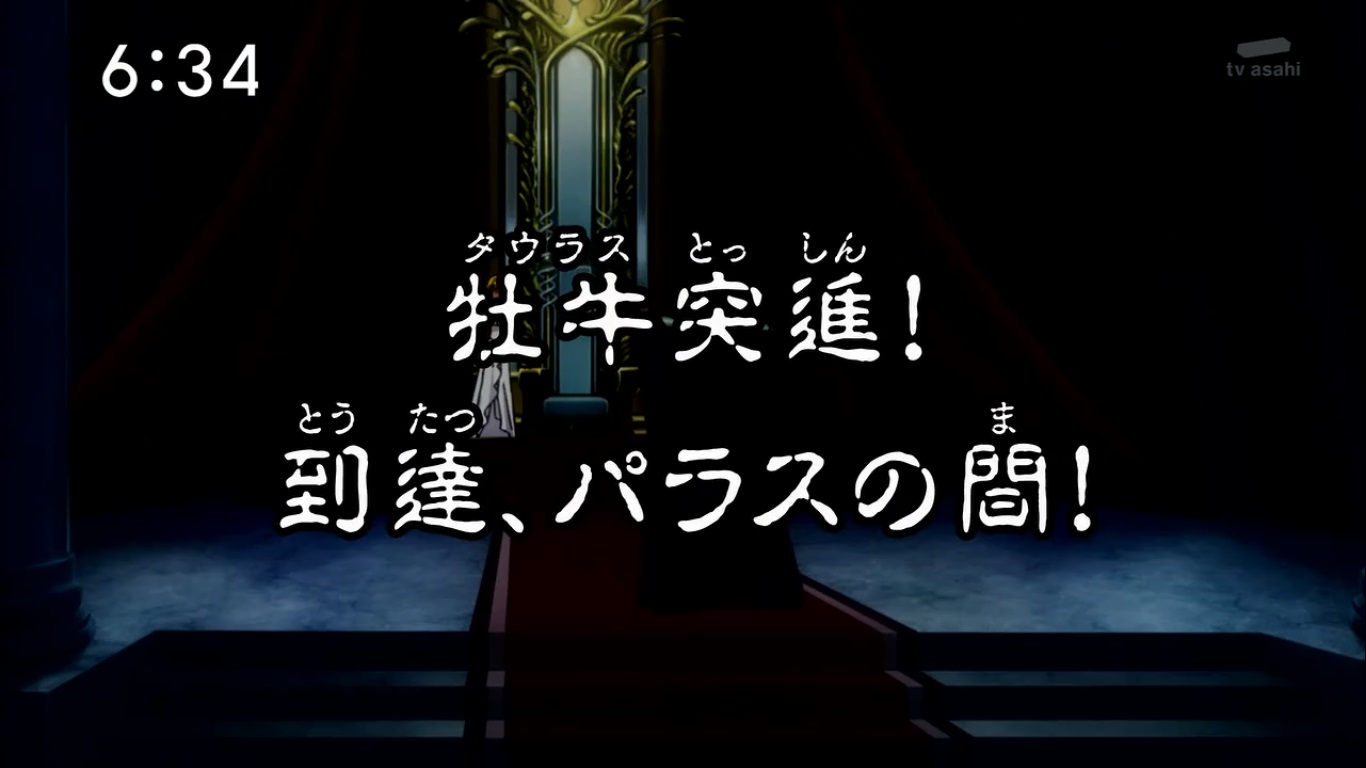
OMG 第 90 話標題 "牡牛突進! 到達,帕拉斯的房間!"
II. OP 2.0 探討
LZ: "奇怪,黃金們這麼踴躍舉手是發生什麼事? 下屆教皇選舉公投嗎?"
沙織:"你們幾個誰想當下一任教皇?"

眾黃金:"我!! 選我!! 不,應該選我!! 別聽他們的,我才該獲選!!"

射手:"請投下你神聖的一票!! 我可是元祖楷模!!"
獅子:"我才是人人稱羨的現任楷模!! 投給我就沒錯了!!"

LZ:"紫龍雙手滴血才勉強修好兩套聖衣,沙織單掌就進化 12 套聖衣。"
"其實如果這麼有效率是不是順便讓她弄一下白銀 + 青銅,全 88 星座神聖衣制霸!!"
沙織: "你們沒見過手掌可以像灑水車一樣噴血的吧?"

紫龍:"還是電阻比較方便,圍個圈牽住手就瞬間升級聖衣不用修。"

東映真的很念舊,都 30 年了還無法忘懷當初 SS TV 版的"You Jump, I Jump" 經典 OP 畫面。
SS TV 版 "You Jump, I Jump" 1
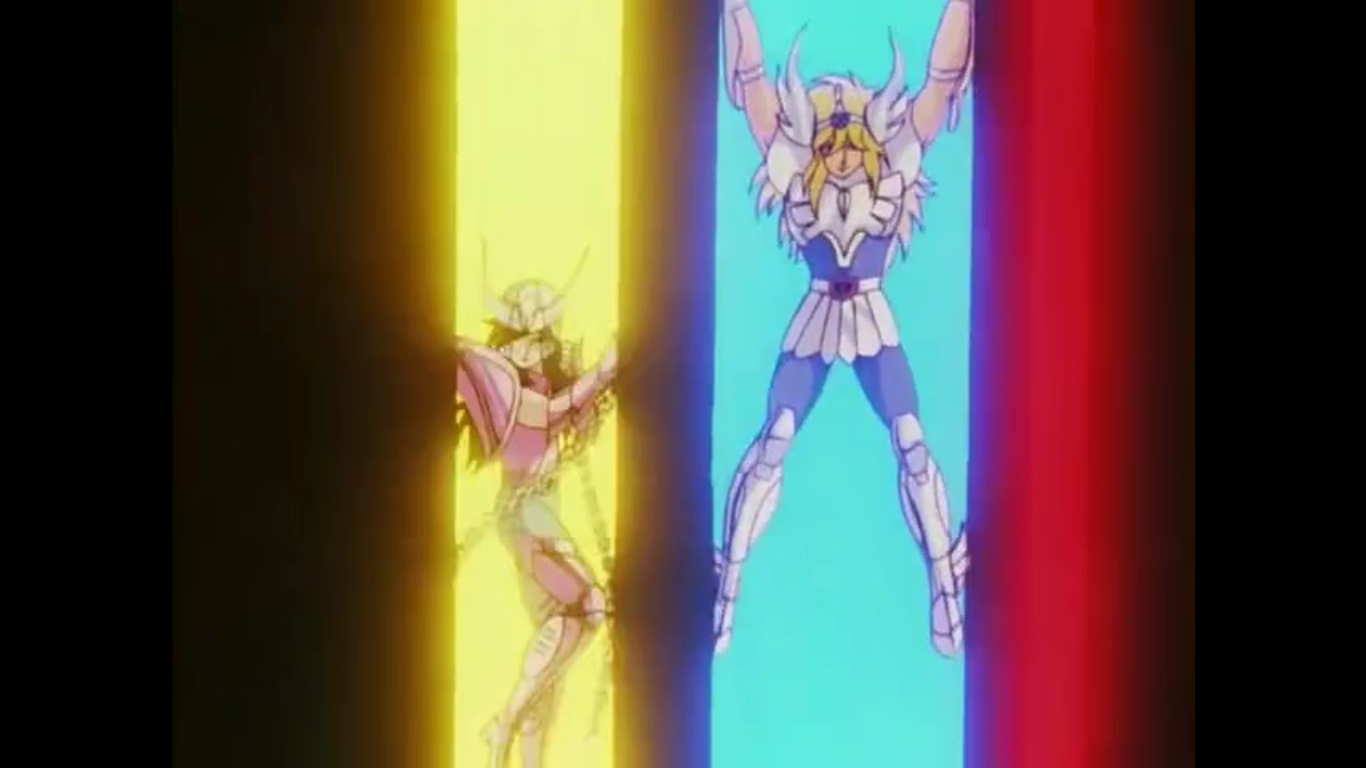
SS TV 版 "You Jump, I Jump" 2
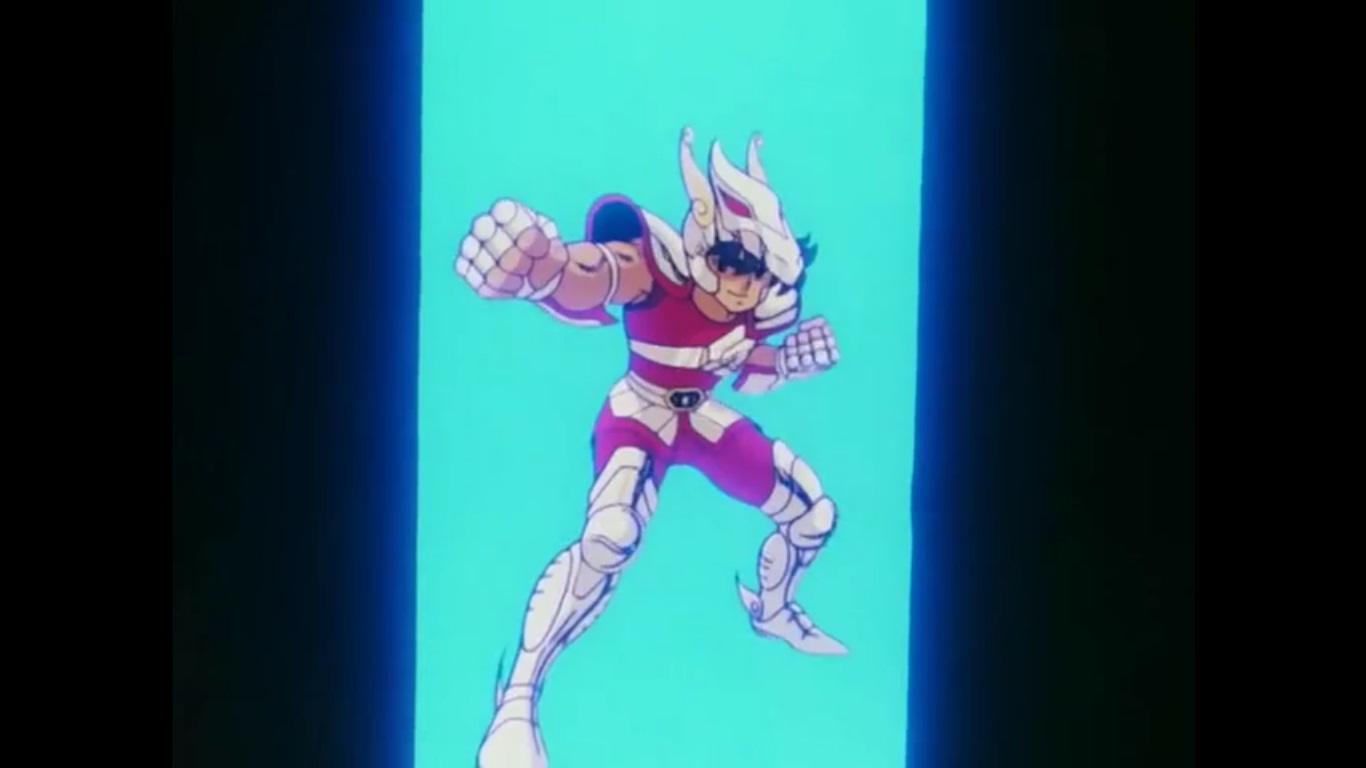
OMG 版 "You Jump, I Jump" 1

OMG 版 "You Jump, I Jump" 2
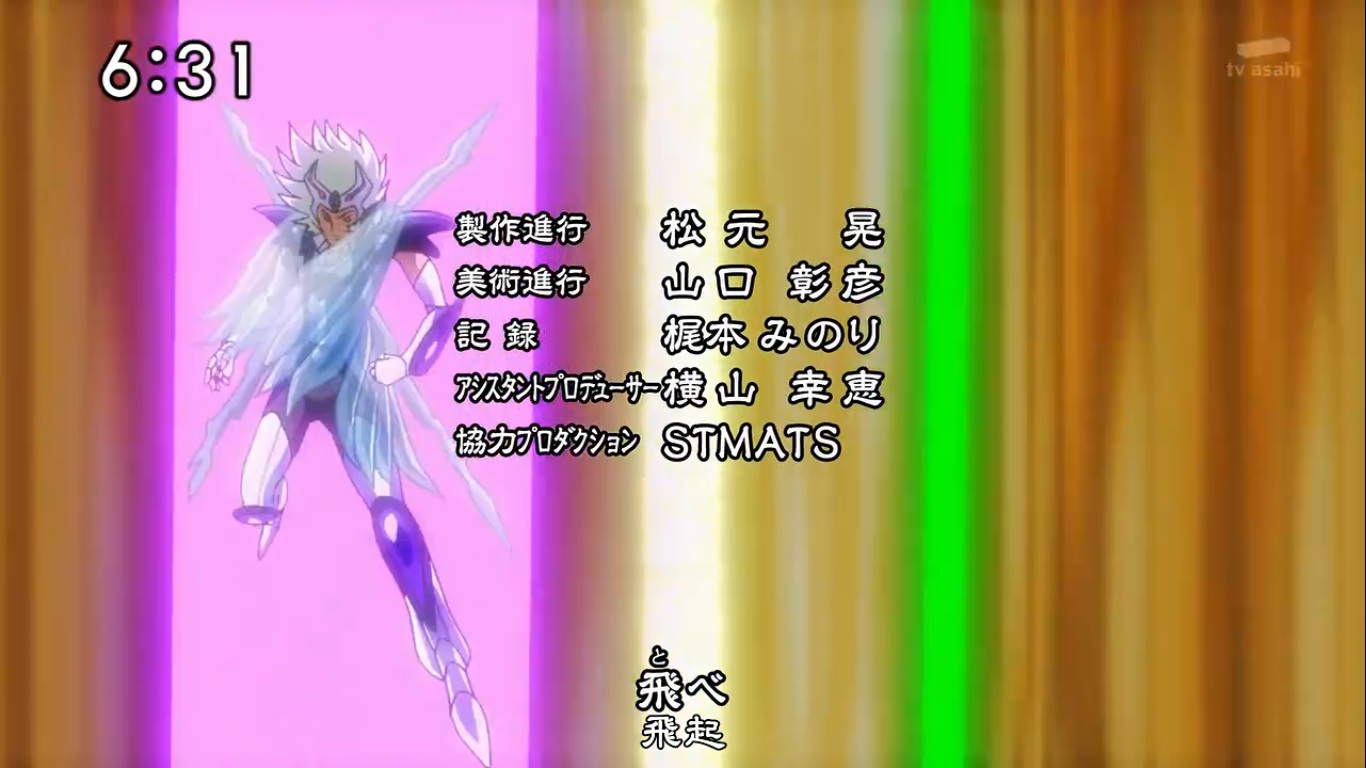
SOG 版 "You Jump, I Jump" 1
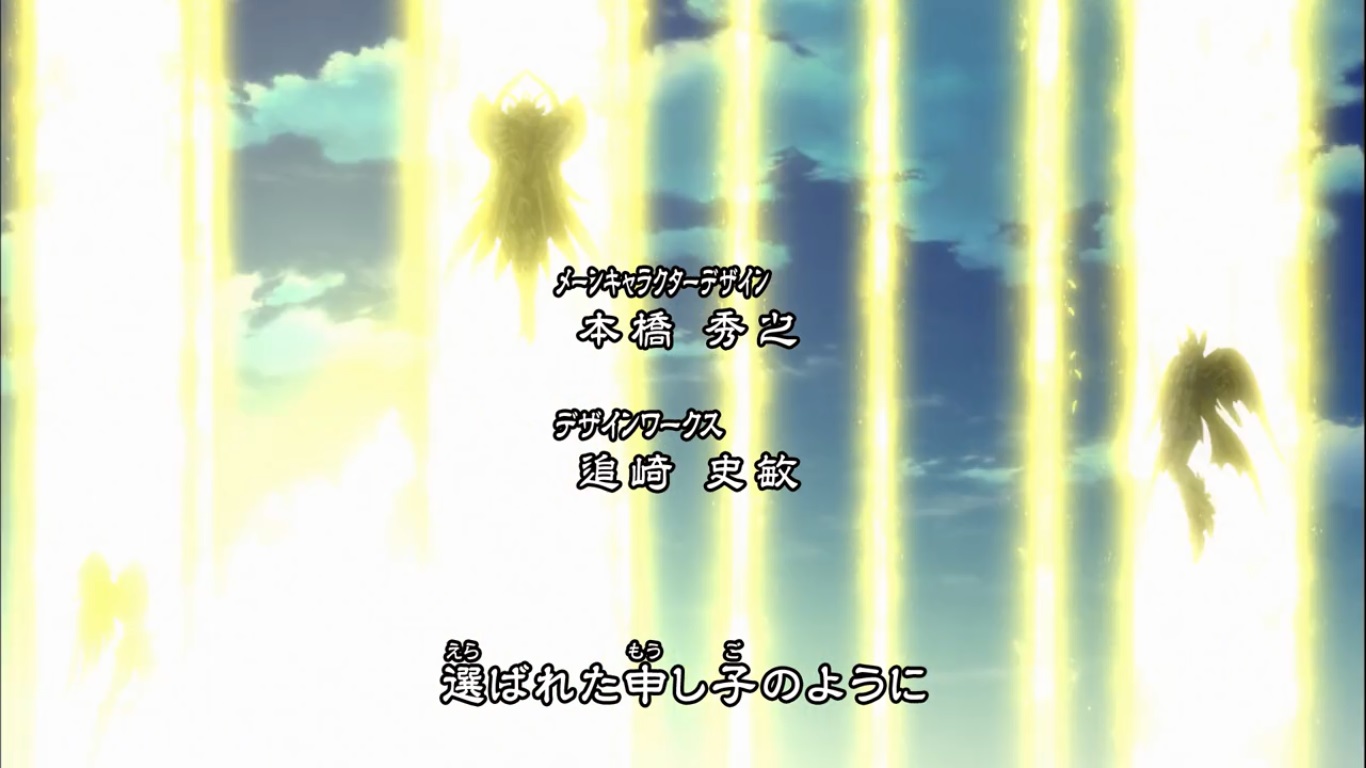
SOG 版 "You Jump, I Jump" 2
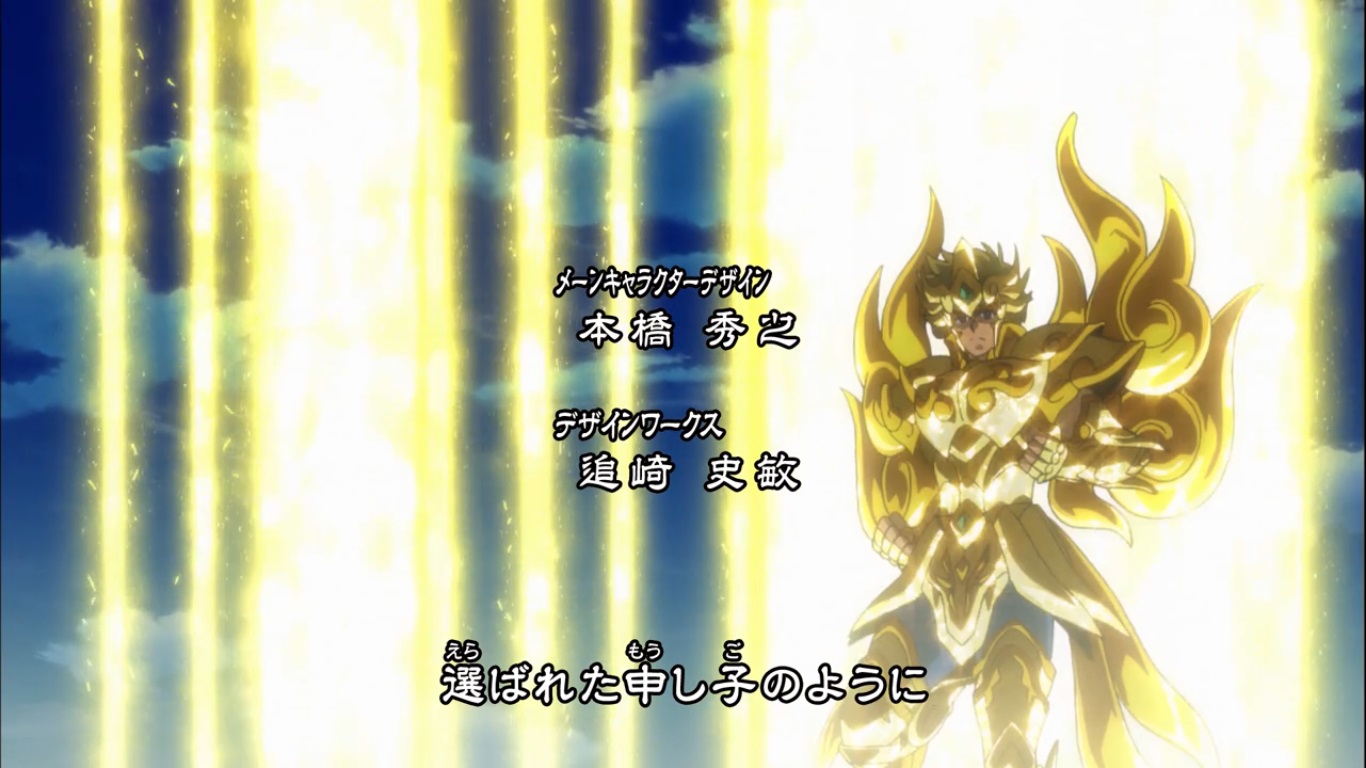
III. 前作元素 - SS (TV 版)
射手座再次被擊落山崖

IV. 劇組的癖好與口號
V. 北歐仙宮
a) 神話補習班
Ragnarok
諸神的黃昏(Ragnarök)是 北歐神話預言中的一連串巨大劫難,包括造成許多重要 神祇死亡的大戰( 奧丁、 索爾、 弗雷、 海姆達爾、 火巨人、 霜巨人、 洛基等),無數的自然浩劫,之後整個世界沉沒在水底。然而最終世界復甦了,存活的神與兩名人類重新建立了新世界。這是北歐神話極重要的一部份,也是許多學術研討與理論的主題。諸神的黃昏主要記錄在 詩體埃達與 散文埃達。其原名 Ragnarökr或 Ragnarökkr意為「諸神的末日」。
末日的預兆
諸神的黃昏的預兆,先是人類面臨 芬布爾之冬的三個漫長嚴冬,四面八方颳起強勁的風雪冰封大地,沒有陽光,世界從此沒有了夏天,在刺骨的嚴寒中,世界充滿了猜忌和衝突的陰影,戰爭和惡意支配了世界,全世界的人用矛或劍互相砍殺,血染紅了大地,連盾都蹦裂開來,曠野飢餓的野獸為了尋找食物四處徘徊,人們彼此不再寬諒互助,手足相殘、父子成仇,在醜陋的競爭中互相殘殺,整個世界變得非常不安,罪惡如瘟疫般蔓延。所有施了法術的魔鍊和詛咒的束縛也都消失了。
世界之樹(Yggdrasil)頂端的公雞 古林肯比(Gullinkambi)不斷的長鳴警告,啼叫的聲嘶力竭,立於「金宮」(Gladsheim)屋頂的 法亞拉(Fjalar)也全力呼應,巨狼 芬里爾掙脫了諸神打造的枷鎖,牠的兩隻魔狼兒子分別吞掉了在天空運行的 太陽與 月亮;毒龍 尼德霍格掏空了 世界之樹的深根;環繞「 中庭」的塵世巨蟒 耶夢加得從海底泥床上醒來,碩長的尾巴掀起巨浪淹沒了中庭 米德加爾特的山谷和山脈,海水直衝上諸神的國度;同時, 霜巨人和居住山上的巨人們也趕來了。被囚禁的 洛基也重獲自由。
末日之戰
海面波濤洶湧, 洪水漫上陸地。 芬里爾的眼睛和鼻孔冒著火焰,耶夢加得則吐著毒氣,兩者一同向 阿斯嘉特(又譯: 阿薩)奔去。天地不久就因為耶夢加得的毒氣而變得暗無天日。
南方,火焰之國 穆斯貝爾海姆(Muspelheim)的火焰巨人,伴隨著熊熊烈焰向眾神開戰,不斷地噴出火焰焚燒眼前的一切,火焰之國首領 史爾特爾(Surtr)持著「炎之魔劍」(又稱破滅之枝),散發出比太陽更耀眼的光芒照亮了整片天空,東方,智慧巨人 密米爾掌著船舵,和大蛇 耶夢加得一同向諸神國度劃來,胸前沾滿鮮血的地獄惡犬 加姆,立在面臨灰暗悲哀深淵的岩石上狂吠,死亡之國女王 赫爾(Hel)站在用死人指甲製成的大船- 納吉爾法(Naglfar)上,船中載滿 霜巨人的軍隊向諸神的國度開來,巨人軍隊擠滿了 虹橋(Bifrost),喧囂聲震撼宇宙,莊嚴華麗的虹橋終於在敵人蹂躪下崩壞粉碎,山脈崩裂,岩石成灰四處飛散。
阿斯嘉特的守衛神 海姆達爾(Heimdall)看到這種情景,立刻取出了密藏於 世界之樹尤克特拉希爾濃蔭中的神奇號角,吹出緊急信號,以召集諸神和英雄,號角的聲音響徹雲霄,比雷鳴還清楚,向諸神的國度報告不幸的消息,阿斯嘉特諸神全副武裝乘著 斯基德普拉特尼而來,諸神的軍隊迅速地拿起武器,衝出有540個門的「 英靈殿」,在 維格利德(Vigrid)原野上布好陣勢,開始迎擊巨人們,圓盾與圓盾互相撞擊,尖銳的長槍在空中飛舞,像密集的陣雨,喊聲動搖天地。
在戰鬥的前夕, 奧丁隻身前往命運井一探,只見到 諾倫三女神臉罩薄紗,默然地坐在凋零的世界之樹旁,身邊僅有一張破網,奧丁隨即轉往 密米爾之處,在他耳邊說了幾句話後便轉身趕回戰場。
現在兩方都到齊了,無數年的仇恨將在這裡一次解決。奧丁戴著金色的頭盔,手持 永恆之槍向芬里爾殺去。雷神 索爾手持 雷神之鎚對上耶夢加得。 弗雷則和 史爾特爾混戰。
由於弗雷先前為了娶 葛德而把 勝利之劍給了 史基尼爾(Skirnir),沒了這把劍,弗雷只能以鹿角和 史爾特爾奮勇戰鬥,最後力戰身亡。
地獄惡犬 加姆,一面淌著鮮血,一面向戰神 提爾衝去,一場激戰過後,提爾和加姆同歸於盡。
雷神索爾和世界大蛇 耶夢加得發生激烈的爭鬥,大蛇龐大的身軀,不斷地翻滾,巧妙地躲避索爾的 雷神之鎚追擊,同時,不斷向索爾噴吐毒汁。索爾憤怒極了,對準大蛇的頭,把雷神之鎚用盡全力擲去,剎時間,雷聲轟隆,電光奪目,這是致命的一擊,大蛇昂起身體,向索爾噴出鮮血,倒地死去,索爾也已深中耶夢加得的毒汁,他搖搖幌幌發出雷鳴般痛苦的呻吟,終於,這位曾帶給阿斯嘉特無數勝利的第一勇士也氣絕而死。
和主神奧丁交鋒的對手是魔狼芬里爾。芬里爾張開牠那足以撐滿天地的巨口,芬里爾的眼睛和鼻孔冒著火焰,兩眼發出閃電般的光芒,向奧丁猛撲過去。奧丁舉起 永恆之槍迎擊,他頭戴金色的頭盔,深藍色的斗蓬像是藍色火焰一般在他肩後起伏,跨下騎著比風還快的神駿 斯萊布尼爾(Sleipnir),真不愧是阿斯嘉特的眾神之主。但是,不幸的是,戰運不佳,廝殺不久就被芬里爾一口咬死。奧丁的兒子 維達見到這般慘狀,便衝上前,用穿著鐵鞋的腳踩住巨狼的下顎,再用手用力扯開上顎,終把芬里爾撕裂,然後撿起父親的神槍,然後一槍從巨狼的喉嚨刺進心臟,殺死了芬里爾。
洛基的對手是守衛 虹橋的 海姆達爾,受過長期處罰之後,洛基的相貌極其可怕,臉色像「死」一樣蒼白,長髮和鬍子蓬然怒立,看來好像奇怪的角。海姆達爾很快以劍斬下了這醜陋的頭,但是被斬下的頭顱卻從地上彈躍而起,打中海姆達爾的胸部,竟奪去了海姆達爾的生命,最後他們的戰鬥以雙方的死亡結束。
戰場上堆滿眾神和巨人怪獸的屍體,平原已經變成一片血海。毒龍 尼德霍格在戰場上空飛翔,雙翼發出駭人的聲響,貪婪地啃食著染滿鮮血尚存餘溫的屍體,天空中發出血般暗紅的光,把天空和大地染成一片深紅,戰場上立著的身影已寥寥可數,這時 史爾特爾把炎之魔劍投向天空,在紅蓮般的熊熊烈焰之中,「中庭」已成一片火海,烈火柱貫穿宇宙,濃煙卷沒山頂,支撐 宇宙的世界之樹也被火焰吞沒而崩倒,整個宇宙轟然毀滅。
星辰從蒼穹中落下,時間已不復存在,焦黑的地面搖晃著沉入波濤洶湧的海底,觸目所及的只有滔天巨浪,宇宙間只剩下一片死寂的大沉默和永劫的黑暗。
新世界
In Norse mythology, Ragnarök is a series of future events, including a great battle foretold to ultimately result in the death of a number of major figures (including the gods Odin, Thor, Tyr, Freyr, Heimdallr, and Loki), the occurrence of various natural disasters, and the subsequent submersion of the world in water. Afterward, the world will resurface anew and fertile, the surviving and returning gods will meet, and the world will be repopulated by two human survivors. Ragnarök is an important event in the Norse canon, and has been the subject of scholarly discourse and theory. The event is attested primarily in the Poetic Edda, compiled in the 13th century from earlier traditional sources, and the Prose Edda, written in the 13th century by Snorri Sturluson. In the Prose Edda, and a single poem in the Poetic Edda, the event is referred to as Ragnarök or Ragnarøkkr (Old Norse "Fate of the Gods" and "Twilight of the Gods" respectively), a usage popularised by 19th-century composer Richard Wagner with the title of the last of his Der Ring des Nibelungen operas, Götterdämmerung (1876).
Etymology
The Old Norse compound ragnarok has a long history of interpretation. Its first element, ragna, is unproblematic, being the genitive plural of regin (n. pl.) "the ruling powers, gods". The second element is more difficult, as it occurs in two variants, -rök and -røkkr. Zoega's Old Icelandic Dictionary treats the two forms as two separate compounds, glossing ragnarök as "the doom or destruction of the gods" and ragnarøkkr as "the twilight of the gods" (1910).
The plural noun rök, has several meanings, such as "development, origin, cause, relation, fate." [2] The word ragnarök as a whole is then usually interpreted as the "final destiny of the gods." [3]
The singular form ragnarøk(k)r is found in stanza 39 of the Poetic Edda poem Lokasenna, and in the Prose Edda. The noun røk(k)r means "twilight" (from a verb røkkva "to grow dark"), suggesting a translation "twilight of the gods". This reading was widely considered a folk-etymological corruption, or a learned reinterpretation, of the original term due to the merger of /ǫ/ and /ø/ in Old Icelandic after ca. 1200 [4] (nevertheless giving rise to the concept of Götterdämmerung "Twilight of the Gods" in the German reception of Norse mythology [5]). Nevertheless, Haraldur Bernharesson in a 2007 paper suggested that the singular form -røkr "twilight" (from a Proto-Germanic * rekwa) might have been the original reading. [6] Haraldur Bernharesson argues instead that the words ragnarök and ragnarøkkr are closely related, etymologically and semantically, and suggests a meaning of "renewal of the divine powers." [7]
Other terms used to refer to the events surrounding Ragnarök in the Poetic Edda include aldar rök (aldar means age, "end of an age") from stanza 39 of Vaftrúenismál, tíva rök from stanzas 38 and 42 of Vaftrúenismál, tá er regin deyja ("when the gods die") from Vaftrúenismál stanza 47, unz um rjúfask regin ("when the gods will be destroyed") from Vaftrúenismál stanza 52, Lokasenna stanza 41, and Sigrdrífumál stanza 19, aldar rof ("destruction of the age") from Helgakviea Hundingsbana II stanza 41, regin trjóta ("end of the gods") from Hyndluljóe stanza 42, and, in the Prose Edda, tá er Muspellz-synir herja ("when the sons of Muspell move into battle") can be found in chapters 18 and 36 of Gylfaginning. [3]
Attestations
Poetic Edda
The Poetic Edda contains various references to Ragnarök:
Völuspá
In the Poetic Edda poem Völuspá, references to Ragnarök begin from stanza 40 until 58, with the rest of the poem describing the aftermath. In the poem, a völva recites information to Odin. In stanza 41, the völva says:
Old Norse:
Fylliz fiǫrvifeigra manna,ryer ragna siǫtraueom dreyra.Svǫrt verea sólskinof sumor eptir,veer ǫll vályndVitoe ér enn, eea hvat?[8] | English:
It sates itself on the life-bloodof fated men,paints red the powers' homeswith crimson gore.Black become the sun's beamsin the summers that follow,weathers all treacherous.Do you still seek to know? And what?[8] |
The völva then describes three roosters crowing: In stanza 42, the jötunn herdsman Eggthér sits on a mound and cheerfully plays his harp while the crimson rooster Fjalar ( Old Norse "hider, deceiver" [9]) crows in the forest Gálgvier. The golden rooster Gullinkambi crows to the Æsir in Valhalla, and the third, unnamed soot-red rooster crows in the halls of the underworld location of Hel in stanza 43. [10]
After these stanzas, the völva further relates that the hound Garmr produces deep howls in front of the cave of Gnipahellir. Garmr's bindings break and he runs free. The völva describes the state of humanity:
| Brœer muno beriazok at bǫnom verea[z]muno systrungarsifiom spilla.Hart er í heimi,hórdómr mikill—skeggǫld, skálmǫld—skildir ro klofnir—vindǫld, vargǫld—áer verǫld steypiz.Mun engi maerǫerom tyrma.[11] | Brothers will fightand kill each other,sisters' childrenwill defile kinship.It is harsh in the world,whoredom rife—an axe age, a sword age—shields are riven—a wind age, a wolf age—before the world goes headlong.No man will havemercy on another.[11] | |
The "sons of Mím" are described as being "at play", though this reference is not further explained in surviving sources. [12] Heimdall raises the Gjallarhorn into the air and blows deeply into it, and Odin converses with Mím's head. The world tree Yggdrasil shudders and groans. The jötunn Hrym comes from the east, his shield before him. The Midgard serpent Jörmungandr furiously writhes, causing waves to crash. "The eagle shrieks, pale-beaked he tears the corpse," and the ship Naglfar breaks free thanks to the waves made by Jormungandr and sets sail from the east. The fire jötnar inhabitants of Muspelheim come forth. [13]
The völva continues that Jötunheimr, the land of the jötnar, is aroar, and that the Æsir are in council. The dwarves groan by their stone doors. [11] Surtr advances from the south, his sword brighter than the sun. Rocky cliffs open and the jötnar women sink. [14] People walk the road to Hel and the heavens split apart.
The gods then do battle with the invaders: Odin is swallowed whole and alive fighting the wolf Fenrir, causing his wife Frigg her second great sorrow (the first being the death of her son, the god Baldr). [15] Odin's son Víearr avenges his father by rending Fenrir's jaws apart and stabbing it in the heart with his spear, thus killing the wolf. The serpent Jörmungandr opens its gaping maw, yawning widely in the air, and is met in combat by Thor. Thor, also a son of Odin and described here as protector of the earth, furiously fights the serpent, defeating it, but Thor is only able to take nine steps afterward before collapsing. The god Freyr fights Surtr and loses. After this, people flee their homes, and the sun becomes black while the earth sinks into the sea, the stars vanish, steam rises, and flames touch the heavens. [16]
The völva sees the earth reappearing from the water, and an eagle over a waterfall hunting fish on a mountain. The surviving Æsir meet together at the field of Ieavöllr. They discuss Jörmungandr, great events of the past, and the runic alphabet. In stanza 61, in the grass, they find the golden game pieces that the gods are described as having once happily enjoyed playing games with long ago (attested earlier in the same poem). The reemerged fields grow without needing to be sown. The gods Höer and Baldr return from Hel and live happily together. [17]
The völva says that the god Hœnir chooses wooden slips for divination, and that the sons of two brothers will widely inhabit the windy world. She sees a hall thatched with gold in Gimlé, where nobility will live and spend their lives pleasurably. [17] Stanzas 65, found in the Hauksbók version of the poem, refers to a "powerful, mighty one" that "rules over everything" and who will arrive from above at the court of the gods (Old Norse regindómr), [18] which has been interpreted as a Christian addition to the poem. [19] In stanza 66, the völva ends her account with a description of the dragon Níehöggr, corpses in his jaws, flying through the air. The völva then "sinks down." [20] It is unclear if stanza 66 indicates that the völva is referring to the present time or if this is an element of the post-Ragnarök world. [21]
Vaftrúenismál
The Vanir god Njörer is mentioned in relation to Ragnarök in stanza 39 of the poem Vaftrúenismál. In the poem, Odin, disguised as " Gagnráer" faces off with the wise jötunn Vaftrúenir in a battle of wits. Vaftrúenismál references Njörer's status as a hostage during the earlier Æsir-Vanir War, and that he will "come back home among the wise Vanir" at "the doom of men." [22]
In stanza 44, Odin poses the question to Vaftrúenir as to who of mankind will survive the "famous" Fimbulvetr ("Mighty Winter" [23]). Vaftrúenir responds in stanza 45 that those survivors will be Líf and Líftrasir, and that they will hide in the forest of Hoddmímis holt, that they will consume the morning dew, and will produce generations of offspring. In stanza 46, Odin asks what sun will come into the sky after Fenrir has consumed the sun that exists. Vaftrúenir responds that Sól will bear a daughter before Fenrir assails her, and that after Ragnarök this daughter will continue her mother's path. [24]
In stanza 51, Vaftrúenir states that, after Surtr's flames have been sated, Odin's sons Víearr and Váli will live in the temples of the gods, and that Thor's sons Móei and Magni will possess the hammer Mjolnir. In stanza 52, the disguised Odin asks the jötunn about Odin's own fate. Vaftrúenir responds that "the wolf" will consume Odin, and that Víearr will avenge him by sundering its cold jaws in battle. Odin ends the duel with one final question: what did Odin say to his son before preparing his funeral pyre? With this, Vaftrúenir realizes that he is dealing with none other than Odin, whom he refers to as "the wisest of beings," adding that Odin alone could know this. [25] Odin's message has been interpreted as a promise of resurrection to Baldr after Ragnarök. [26]
Helgakviea Hundingsbana IIRagnarök is briefly referenced in stanza 40 of the poem Helgakviea Hundingsbana II. Here, the valkyrie Sigrún's unnamed maid is passing the deceased hero Helgi Hundingsbane's burial mound. Helgi is there with a retinue of men, surprising the maid. The maid asks if she is witnessing a delusion since she sees dead men riding, or if Ragnarök has occurred. In stanza 41, Helgi responds that it is neither. [27]
Prose Edda
Snorri Sturluson's Prose Edda quotes heavily from Völuspá and elaborates extensively in prose on the information there, though some of this information conflicts with that provided in Völuspá.
Gylfaginning chapters 26 and 34
In the Prose Edda book Gylfaginning, various references are made to Ragnarök. Ragnarök is first mentioned in chapter 26, where the throned figure of High, king of the hall, tells Gangleri (King Gylfi in disguise) some basic information about the goddess Ieunn, including that her apples will keep the gods young until Ragnarök. [28]
In chapter 34, High describes the binding of the wolf Fenrir by the gods, causing the god Tyr to lose his right hand, and that Fenrir remains there until Ragnarök. Gangleri asks High why, since the gods could only expect destruction from Fenrir, they did not simply kill Fenrir once he was bound. High responds that "the gods hold their sacred places and sanctuaries in such respect that they chose not to defile them with the wolf's blood, even though the prophecies foretold that he would be the death of Odin." [29]
As a consequence of his role in the death of the god Baldr, Loki (described as father of Fenrir) is bound on top of three stones with the internal organs of his son Narfi (which are turned into iron) in three places. There, venom drops onto his face periodically from a snake placed by the jötunn Skaei, and when his wife Sigyn empties the bucket she is using to collect the dripping venom, the pain he experiences causes convulsions, resulting in earthquakes. Loki is further described as being bound this way until the onset of Ragnarök. [30]
Gylfaginning chapter 51
Chapter 51 provides a detailed account of Ragnarök interspersed with various quotes from Völuspá, while chapters 52 and 53 describe the aftermath of these events. In Chapter 51, High states the first sign of Ragnarök will be Fimbulvetr, during which time three winters will arrive without a summer, and the sun will be useless. High details that, prior to these winters, three earlier winters will have occurred, marked with great battles throughout the world. During this time, greed will cause brothers to kill brothers, and fathers and sons will suffer from the collapse of kinship bonds. High then quotes stanza 45 of Völuspá. Next, High describes that the wolf will first swallow the sun, and then his brother the moon, and mankind will consider the occurrence as a great disaster resulting in much ruin. The stars will disappear. The earth and mountains will shake so violently that the trees will come loose from the soil, the mountains will topple, and all restraints will break, causing Fenrir to break free from his bonds. [31]
High relates that the great serpent Jörmungandr, also described as a child of Loki in the same source, will breach land as the sea violently swells onto it. The ship Naglfar, described in the Prose Edda as being made from the human nails of the dead, is released from its mooring, and sets sail on the surging sea, steered by a jötunn named Hrym. At the same time, Fenrir, eyes and nostrils spraying flames, charges forward with his mouth wide open, his upper jaw reaching to the heavens, his lower jaw touching the earth. At Fenrir's side, Jörmungandr sprays venom throughout the air and the sea. [32]
During all of this, the sky splits into two. From the split, the "sons of Muspell" ride forth. Surtr rides first, surrounded by flames, his sword brighter than the sun. High says that "Muspell's sons" will ride across Bifröst, described in Gylfaginning as a rainbow bridge, and that the bridge will then break. The sons of Muspell (and their shining battle troop) advance to the field of Vígríer, described as an expanse that reaches "a hundred leagues in each direction," where Fenrir, Jörmungandr, Loki (followed by "Hel's own"), and Hrym (accompanied by all frost jötnar) join them. While this occurs, Heimdallr stands and blows the Gjallarhorn with all his might. The gods awaken at the sound, and they meet. Odin rides to Mímir's Well in search of counsel from Mímir. Yggdrasil shakes, and everything, everywhere fears. [32]
High relates that the Æsir and the Einherjar dress for war and head to the field. Odin, wearing a gold helmet and an intricate coat of mail, carries his spear Gungnir and rides before them. Odin advances against Fenrir, while Thor moves at his side, though Thor is unable to assist Odin because he has engaged Jörmungandr in combat. According to High, Freyr fiercely fights with Surtr, but Freyr falls because he lacks the sword he once gave to his messenger, Skirnir. The hound Garmr (described here as the "worst of monsters") breaks free from his bonds in front of Gnipahellir, and fights the god Tyr, resulting in both of their deaths. [33]
Thor kills Jörmungandr, yet is poisoned by the serpent, and manages to walk nine steps before falling to the earth dead. Fenrir swallows Odin, though immediately afterward his son Víearr kicks his foot into Fenrir's lower jaw, grips Fenrir's upper jaw, and rips apart Fenrir's mouth, killing Fenrir. Loki fights Heimdallr, and the two kill one another. Surtr covers the earth in fire, causing the entire world to burn. High quotes stanzas 46 to 47 of Völuspá, and additionally stanza 18 of Vaftrúenismál (the latter relating information about the battlefield Vígríer). [34]
Gylfaginning chapters 52 and 53
At the beginning of chapter 52, Gangleri asks "what will be after heaven and earth and the whole world are burned? All the gods will be dead, together with the Einherjar and the whole of mankind. Didn't you say earlier that each person will live in some world throughout all ages?" [35]
The figure of Third, seated on the highest throne in the hall, responds that there will be many good places to live, but also many bad ones. Third states that the best place to be is Gimlé in the heavens, where a place exists called Okolnir that houses a hall called Brimir—where one can find plenty to drink. Third describes a hall made of red gold located in Nieafjöll called Sindri, where "good and virtuous men will live." [35] Third further relates an unnamed hall in Náströnd, the beaches of the dead, that he describes as a large repugnant hall facing north that is built from the spines of snakes, and resembles "a house with walls woven from branches;" the heads of the snakes face the inside of the house and spew so much venom that rivers of it flow throughout the hall, in which oath breakers and murderers must wade. Third here quotes Völuspá stanzas 38 to 39, with the insertion of original prose stating that the worst place of all to be is in Hvergelmir, followed by a quote from Völuspá to highlight that the dragon Níehöggr harasses the corpses of the dead there. [36]
Chapter 53 begins with Gangleri asking if any of the gods will survive, and if there will be anything left of the earth or the sky. High responds that the earth will appear once more from the sea, beautiful and green, where self-sown crops grow. The field Ieavöllr exists where Asgard once was, and, there, untouched by Surtr's flames, Víearr and Váli reside. Now possessing their father's hammer Mjolnir, Thor's sons Móei and Magni will meet them there, and, coming from Hel, Baldr and Höer also arrive. Together, they all sit and recount memories, later finding the gold game pieces the Æsir once owned. Völuspá stanza 51 is then quoted. [37]
High reveals that two humans, Líf and Líftrasir, will have also survived the destruction by hiding in the wood Hoddmímis holt. These two survivors consume the morning dew for sustenance, and from their descendants the world will be repopulated. Vaftrúenismál stanza 45 is then quoted. The personified sun, Sól, will have a daughter at least as beautiful as she, and this daughter will follow the same path as her mother. Vaftrúenismál stanza 47 is quoted, and so ends the foretelling of Ragnarök in Gylfaginning.
Archaeological record
Various objects have been identified as depicting events from Ragnarök.
Thorwald's Cross
Thorwald's Cross, a partially surviving runestone erected at Kirk Andreas on the Isle of Man, depicts a bearded human holding a spear downward at a wolf, his right foot in its mouth, while a large bird sits at his shoulder. [39] Rundata dates it to 940, [40] while Pluskowski dates it to the 11th century. [39] This depiction has been interpreted as Odin, with a raven or eagle at his shoulder, being consumed by Fenrir at Ragnarök. [39][41] On the other side of the stone is a depiction of a large cross and another image parallel to the Odin figure that has been described as Christ triumphing over Satan. [42] These combined elements have led to the cross as being described as " syncretic art"; a mixture of pagan and Christian beliefs. [39]
Gosforth Cross
The Gosforth Cross (920–950), in Cumbria, England, is a standing cross of a typical Anglo-Saxon form, carved on all sides of the long shaft, which is nearly square in section. Apart from panels of ornament, the scenes include a Christian Crucifixion, and possibly another scene in Hell, but the other scenes are generally interpreted as narrative incidents from the Ragnarök story, [43] even by a scholar as cautious of such interpretations as David M. Wilson. [39][44] The Ragnarök battle itself may be depicted on the north side. [45] The cross features various figures depicted in Borre style, including a man with a spear facing a monstrous head, one of whose feet is thrust into the beast's forked tongue and on its lower jaw, while the other is placed against its upper jaw, a scene interpreted as Víearr fighting Fenrir. [39]
Ledberg stone
The 11th century Ledberg stone in Sweden, similarly to Thorwald's Cross, features a figure with his foot at the mouth of a four-legged beast, and this may also be a depiction of Odin being devoured by Fenrir at Ragnarök. [41] Below the beast and the man is a depiction of a legless, helmeted man, with his arms in a prostrate position. [41] The Younger Futhark inscription on the stone bears a commonly seen memorial dedication, but is followed by an encoded runic sequence that has been described as "mysterious," [46] and "an interesting magic formula which is known from all over the ancient Norse world." [41]
Skarpåker stone
On the early 11th century Skarpåker Stone, from Södermanland, Sweden, a father grieving his dead son used the same verse form as in the Poetic Edda in the following engraving:
| Iare skal rifnaok upphiminn | "Earth shall be rivenand the over-heaven." | |
Jansson (1987) notes that at the time of the inscription, everyone who read the lines would have thought of Ragnarök and the allusion that the father found fitting as an expression of his grief. [47]
Theories and interpretations
Cyclical time
Rudolf Simek theorizes that the survival of Líf and Líftrasir at the end Ragnarök is "a case of reduplication of the anthropogeny, understandable from the cyclic nature of the Eddic eschatology". Simek says that Hoddmímis holt "should not be understood literally as a wood or even a forest in which the two keep themselves hidden, but rather as an alternative name for the world-tree Yggdrasill. Thus, the creation of mankind from tree trunks ( Askr, Embla) is repeated after the Ragnarök as well". Simek says that in Germanic regions, the concept of mankind originating from trees is ancient, and additionally points out legendary parallels in a Bavarian legend of a shepherd who lives inside a tree, whose descendants repopulate the land after life there has been wiped out by plague (citing a retelling by F. R. Schröder). In addition, Simek points to an Old Norse parallel in the figure of Örvar-Oddr, "who is rejuvenated after living as a tree-man ( Ǫrvar-Odds saga 24–27)". [48]
Muspille, Heliand, and Christianity
Theories have been proposed about the relation to Ragnarök and the 9th century Old High German epic poem Muspilli about the Christian Last Judgment, where the word Muspille appears, and the 9th century Old Saxon epic poem Heliand about the life of Christ, where various other forms of the word appear. In both sources, the word is used to signify the end of the world through fire. [49] Old Norse forms of the term also appear throughout accounts of Ragnarök, where the world is also consumed in flames, and, though various theories exist about the meaning and origins of the term, its etymology has not been solved. [49]
Proto-Indo-European basis
Parallels have been pointed out between the Ragnarök of the Norse pagans and the beliefs of other related Indo-European peoples. Subsequently, theories have been put forth that Ragnarök represents a later evolution of a Proto-Indo-European belief along with other cultures descending from the Proto-Indo-Europeans. These parallels include comparisons of a cosmic winter motif between the Norse Fimbulwinter, the Iranian Bundahishn and Yima. [50] Víearr's stride has been compared to the Vedic god Vishnu in that both have a "cosmic stride" with a special shoe used to tear apart a beastly wolf. [50] Larger patterns have also been drawn between "final battle" events in Indo-European cultures, including the occurrence of a blind or semi-blind figure in "final battle" themes, and figures appearing suddenly with surprising skills. [50]
Volcanic eruptions[edit]Hilda Ellis Davidson theorizes that the events in Völuspá occurring after the death of the gods (the sun turning black, steam rising, flames touching the heavens, etc.) may be inspired by the volcanic eruptions on Iceland. Records of eruptions on Iceland bear strong similarities to the sequence of events described in Völuspá, especially the eruption at Laki that occurred in 1783. [51] Bertha Phillpotts theorizes that the figure of Surtr was inspired by Icelandic eruptions, and that he was a volcano demon. [52] Surtr's name occurs in some Icelandic place names, among them the lava tube caves Surtshellir, a number of dark caverns in the volcanic central region of Iceland.
Bergbúa táttr
Parallels have been pointed out between a poem spoken by a jötunn found in the 13th century táttr Bergbúa táttr ("the tale of the mountain dweller"). In the tale, Thórd and his servant get lost while traveling to church in winter, and so take shelter for the night within a cave. Inside the cave they hear noises, witness a pair of immense burning eyes, and then the being with burning eyes recites a poem of 12 stanzas. The poem the being recites contains references to Norse mythology (including a mention of Thor) and also prophecies (including that "mountains will tumble, the earth will move, men will be scoured by hot water and burned by fire"). Surtr's fire receives a mention in stanza 10. John Lindow says that the poem may describe "a mix of the destruction of the race of giants and of humans, as in Ragnarök" but that "many of the predictions of disruption on earth could also fit the volcanic activity that is so common in Iceland." [53]
Modern influence
In late 2013 and early 2014, it was widely reported in English-language media outlets that Ragnarök would occur on February 22, 2014. Apparently patterned after the 2012 phenomenon, the claim was at times attributed to a "Viking Calendar". [54] No such calendar is known to have existed, and the source was a "prediction" made to media outlets by the Jorvik Viking Centre in York, England, and intended to draw attention to an event that the institution was to hold on that date. The Jorvik Viking Centre was criticized for intentionally or unintentionally misleading the public; however, in an article on the incident, Joseph S. Hopkins perceives the media response as an example of a broad revival of interest in the Viking Age and ancient Germanic topics. [55]
b) 被囚禁的女王姐妹
希魯達:"美術組,我突然變得比較不崩也不再一直臉紅。你們是不是後面策劃了什麼陰謀?"
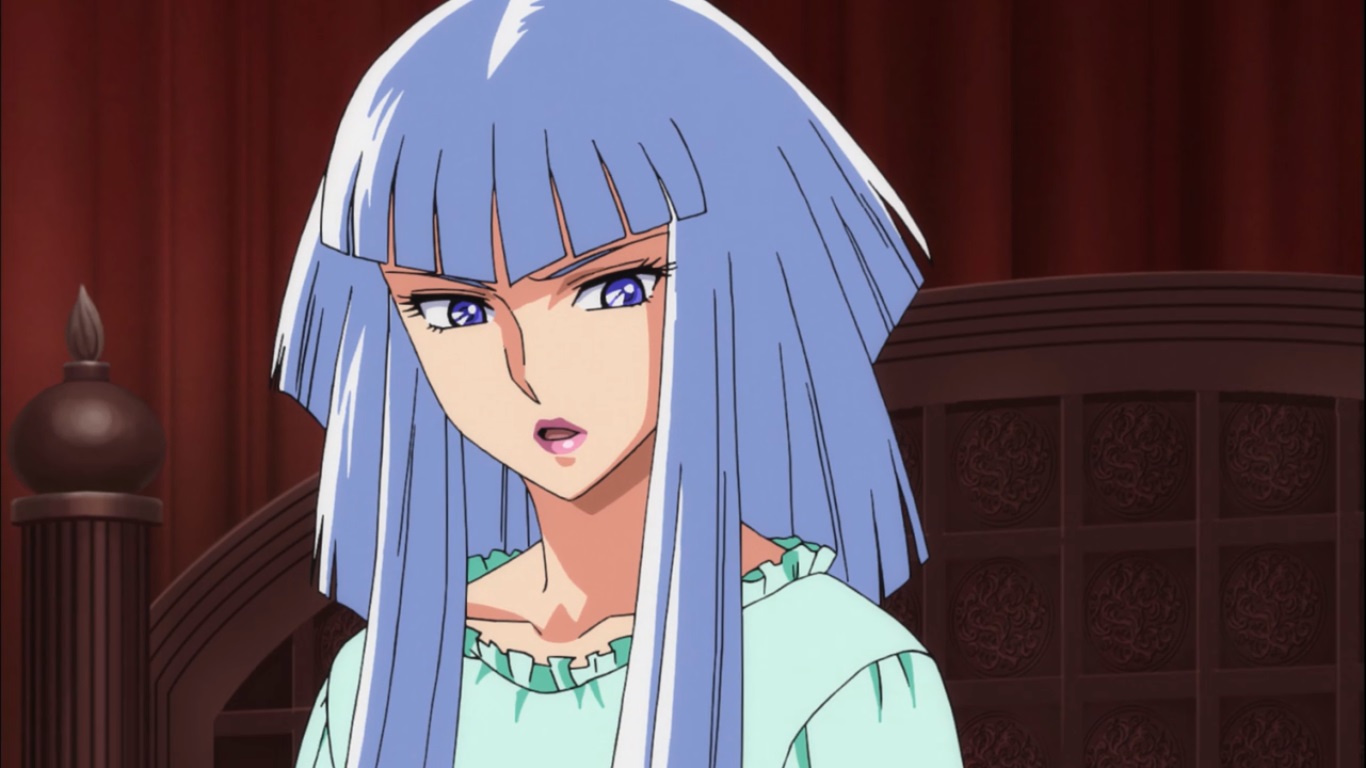
弗蕾雅: "道具組,你們擺審問桌椅幹嘛? 我又沒配 CV 開不了口說話。"

c) 恢復記憶的侍女 Part I
d) 篡位的御醫
反派 BOSS 的三大絕技:忽悠神功 + 縮陽神功 + 護眼神功
LZ:"奇怪,你的手下們是多好騙? 隨便播個畫面看圖說故事就深信不疑?"
"你要不要乾脆順便吹說宙斯是你傭人,波賽頓是你小弟?"

沙織:"我哪有? 你不要隨便血口噴人!!"

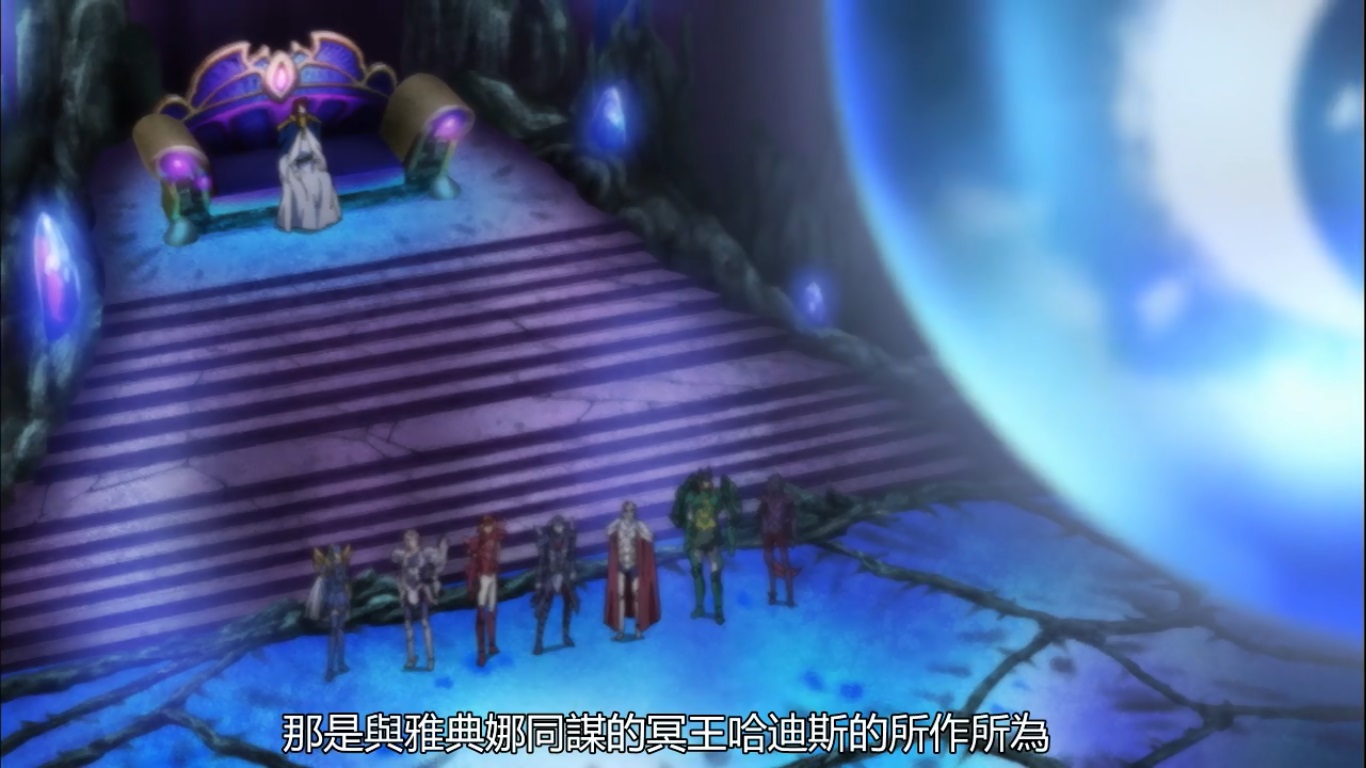
哈帝斯: "住口!! 不要看屬下歷史不好就隨便忽悠他們!!"
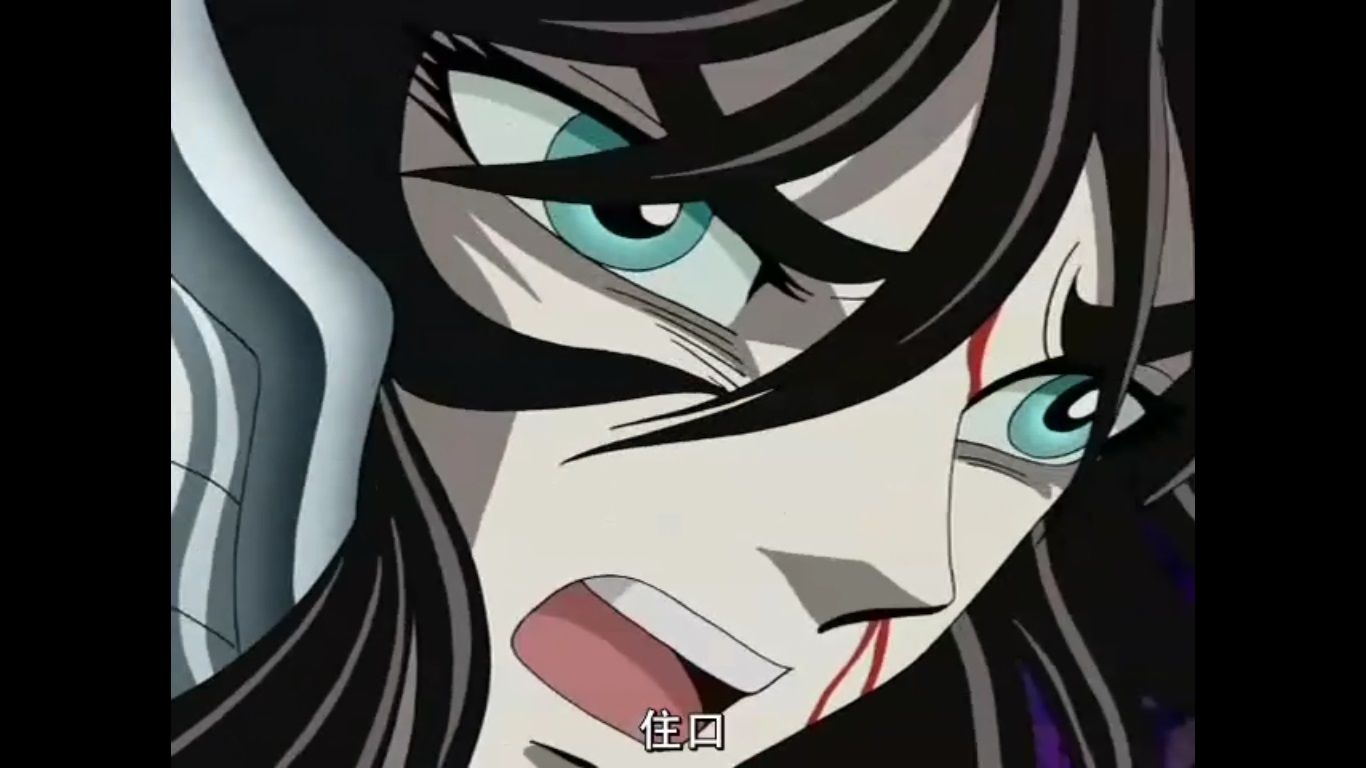
傳說青銅:"聳那 (怎麼這樣) ... 撒歐里桑竟然跟冥王串通好什麼的 ..."


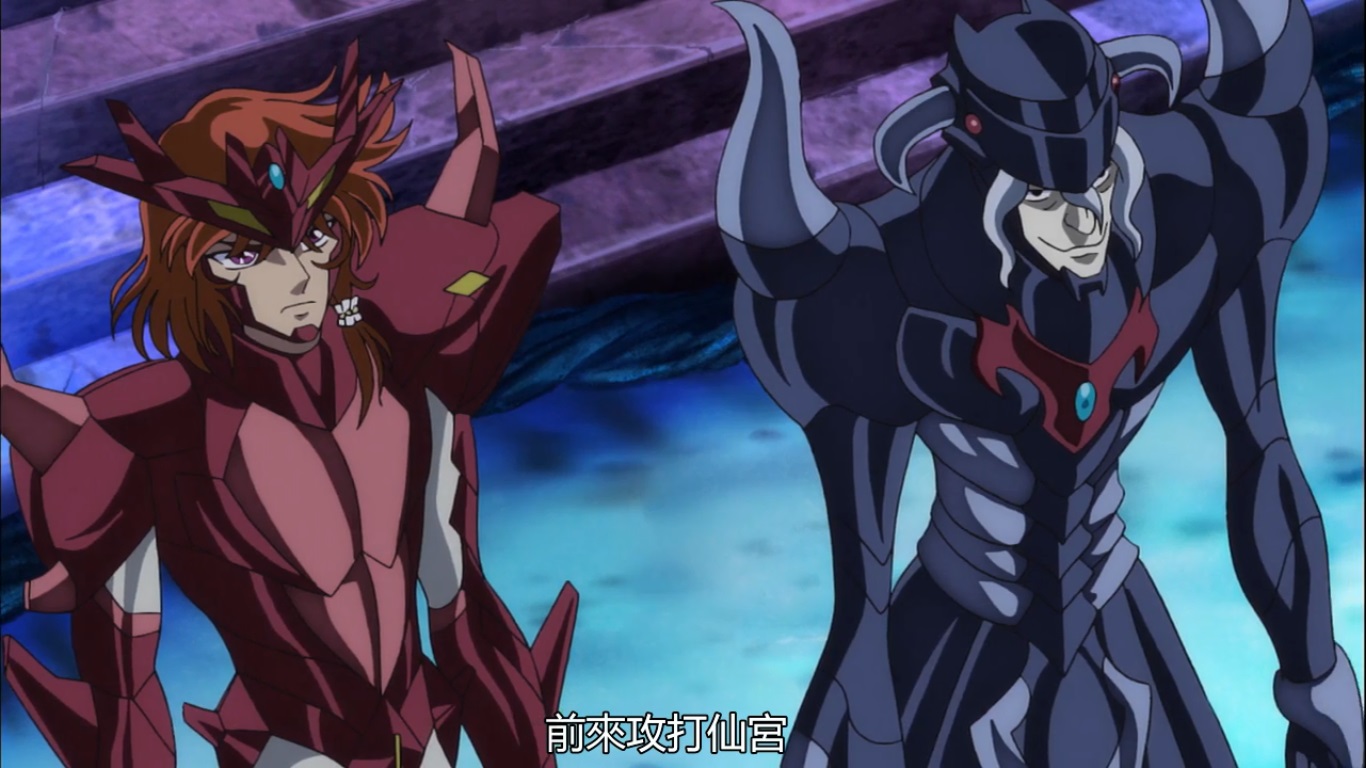
LZ: "對,專門前來攻打仙宮的團隊裡,一個穿便服在雪地昏倒還乖乖讓你關進監獄,另一個穿便服在洞窟打坐按兵不動等女神回 Call。"
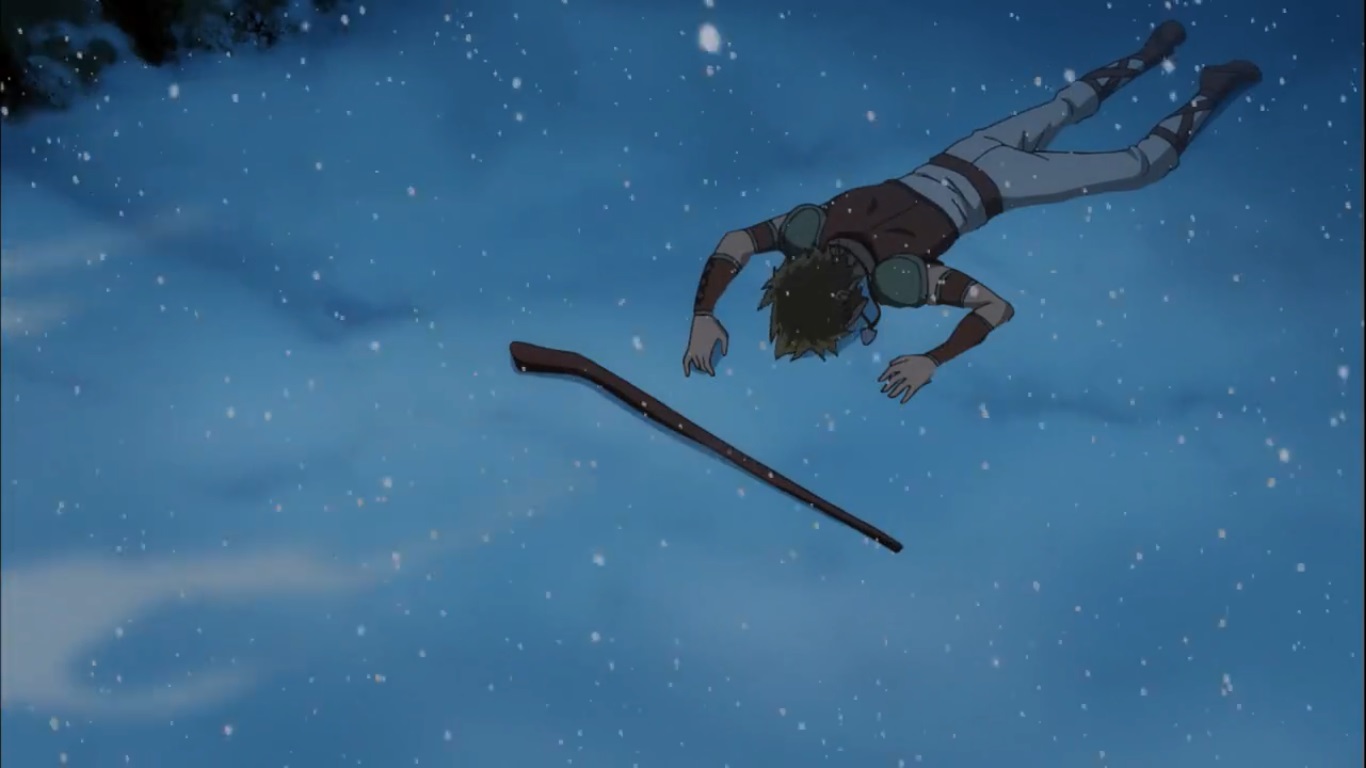

LZ: "你發招雙手愛怎樣擺怎樣揮都隨便,但你兩腿有必要交叉還夾那麼緊嗎?"
"我隔著螢幕都能感覺小安多快窒息了,該不會是特地縮陽增強發招勁道吧?"

除非射手座臨時心軟減輕放箭的力道,很難想像神聖衣化的弓箭直朝瞳孔筆直飛去卻只打了"擦邊球",眼球沒事只留疤。不然就是安多雷亞斯眼睛其實是用星砂和奧利哈爾剛打造而成,不管用黃金箭或天秤武器都無法輕易造成損傷。不相信這個動作難度有多高的朋友,竹內利光請我轉告大家他很樂意當試驗對象。 
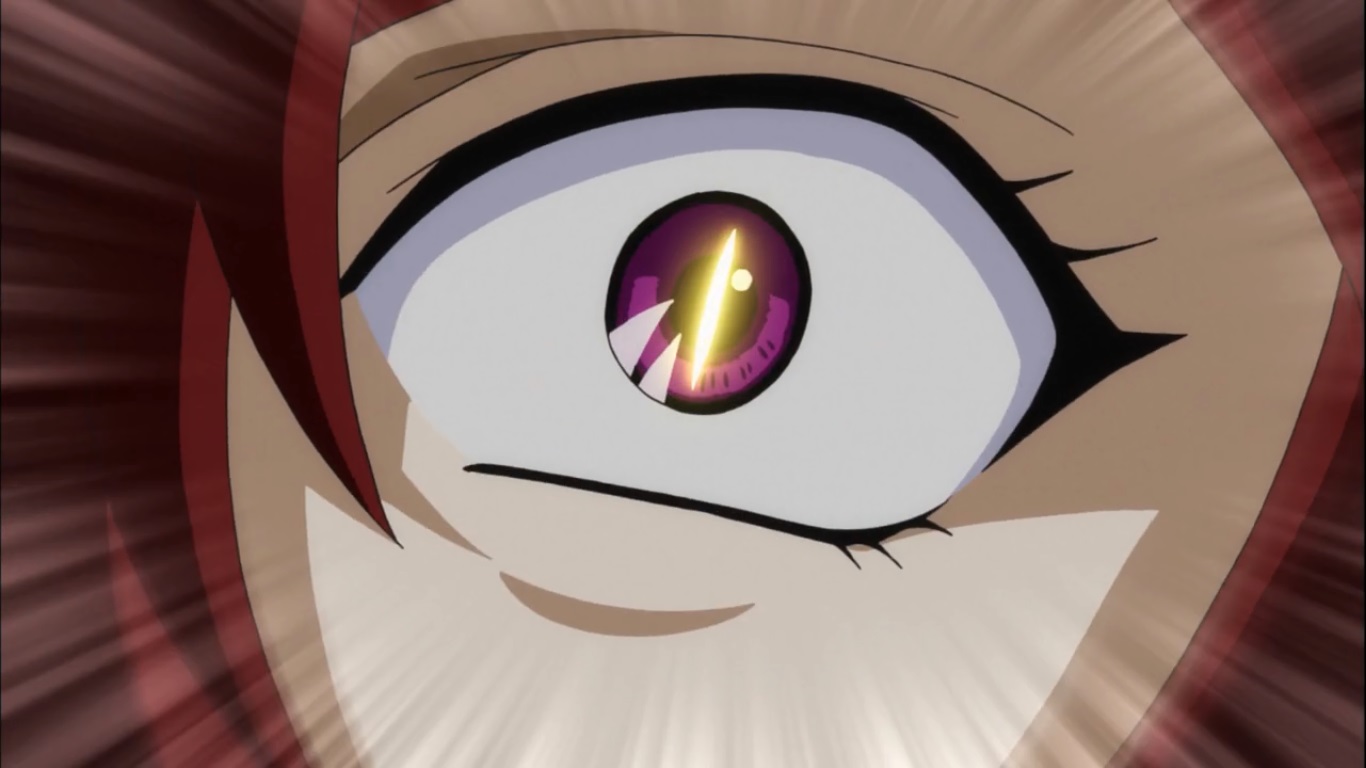
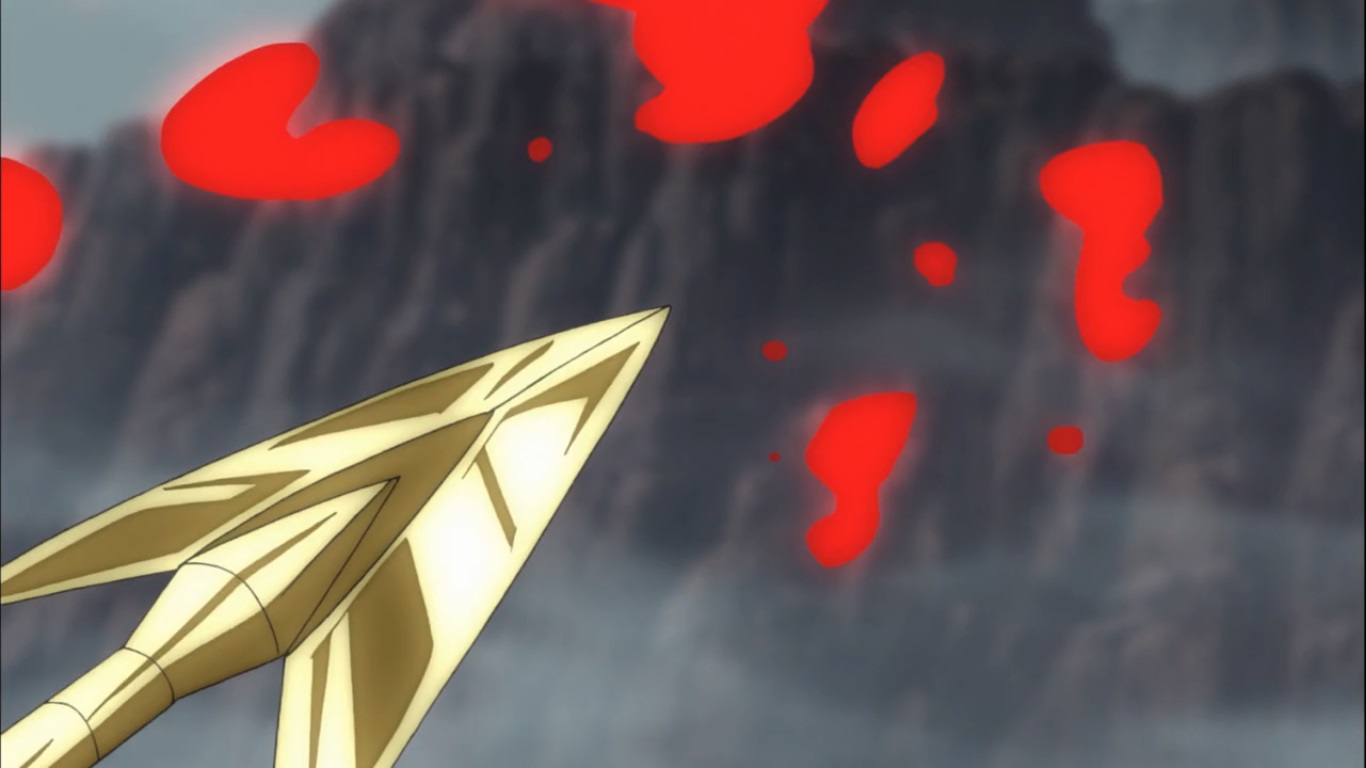

其實我個人挺失望沒看見說好的"傷眼射手"。 

反派 BOSS 的餘興節目
有看 OMG 的朋友們或許還記得在新 12 宮篇美狄雅利用水晶球在頂層觀賞各宮的實況轉播,還有錄影存檔功能可以拎去放重播給伊甸看。

到了 SOG 安多雷亞斯覺得這樣不夠過癮,索性添加了棋盤功能,還自己動手捏棋子造型,邊觀戰邊下棋。
動漫作品討論中,我們經常會聽到有人說,"XX 在下一盤很大的棋 ..."。安多雷亞斯為了裝 B 他同時下七盤。

我個人倒是挺好奇,他究竟是跟電腦對戰,還是一人分飾兩角自 HIGH?

安多雷亞斯: "將軍!!" "哈哈,安多你真厲害 ..." "沒有啦,安多你才高明呢 ..."

反派 BOSS 的集郵進度
從遠角特寫鏡頭我們可以看見天蠍和雙魚一樣都被放置在尺寸稍微大一些的碟子上,是否有特殊含義暫時未知。
可以肯定的是,兩者之間的大碟和其中一個小碟已經擦拭乾淨等著摩羯和水瓶上架了,可能還是一話收兩位。 
米羅:"阿布,我可以跟你換一下位置嗎? 我這區比較冷,而該死的安多雷亞斯又沒開暖氣。"
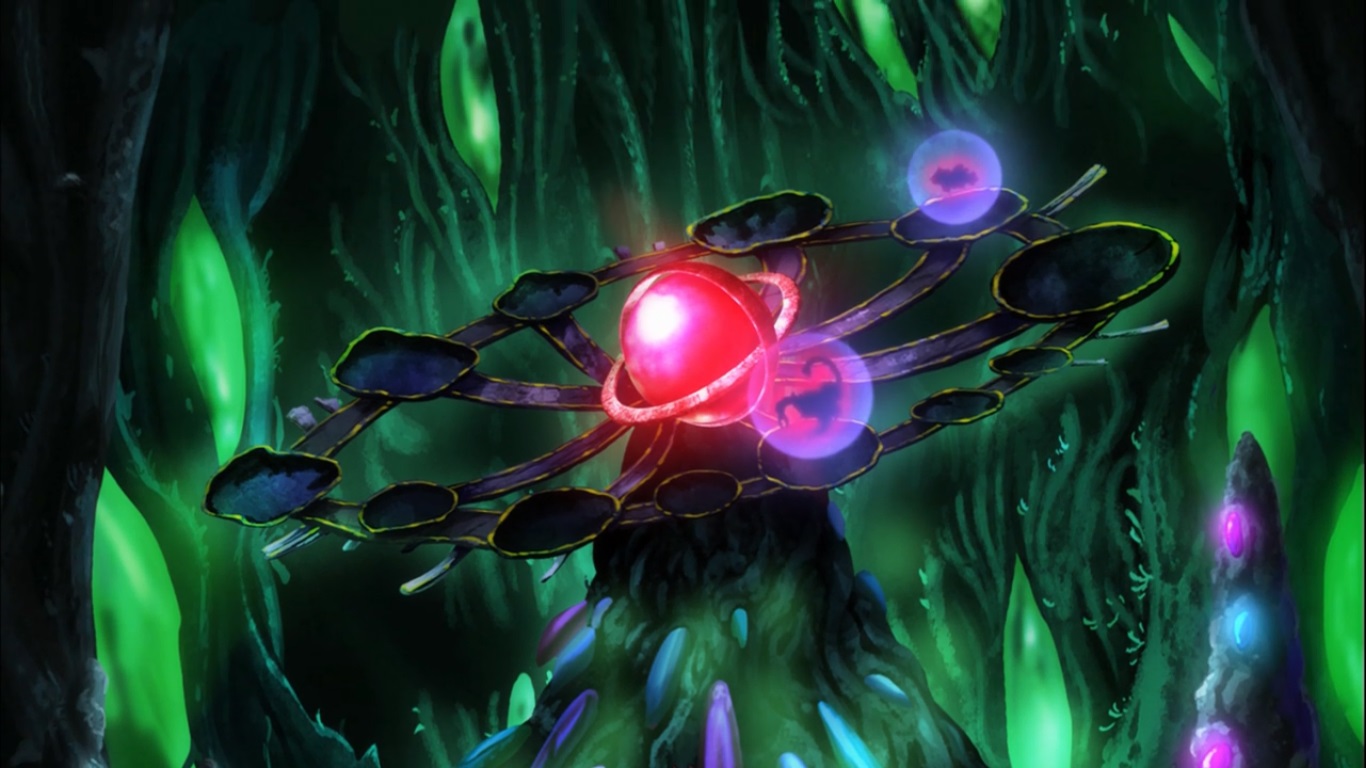
LZ: "美術組,不要以為我們沒發現,在模型支架這裡畫組裝形態可以靠角度和光球省去很多上色的麻煩。"
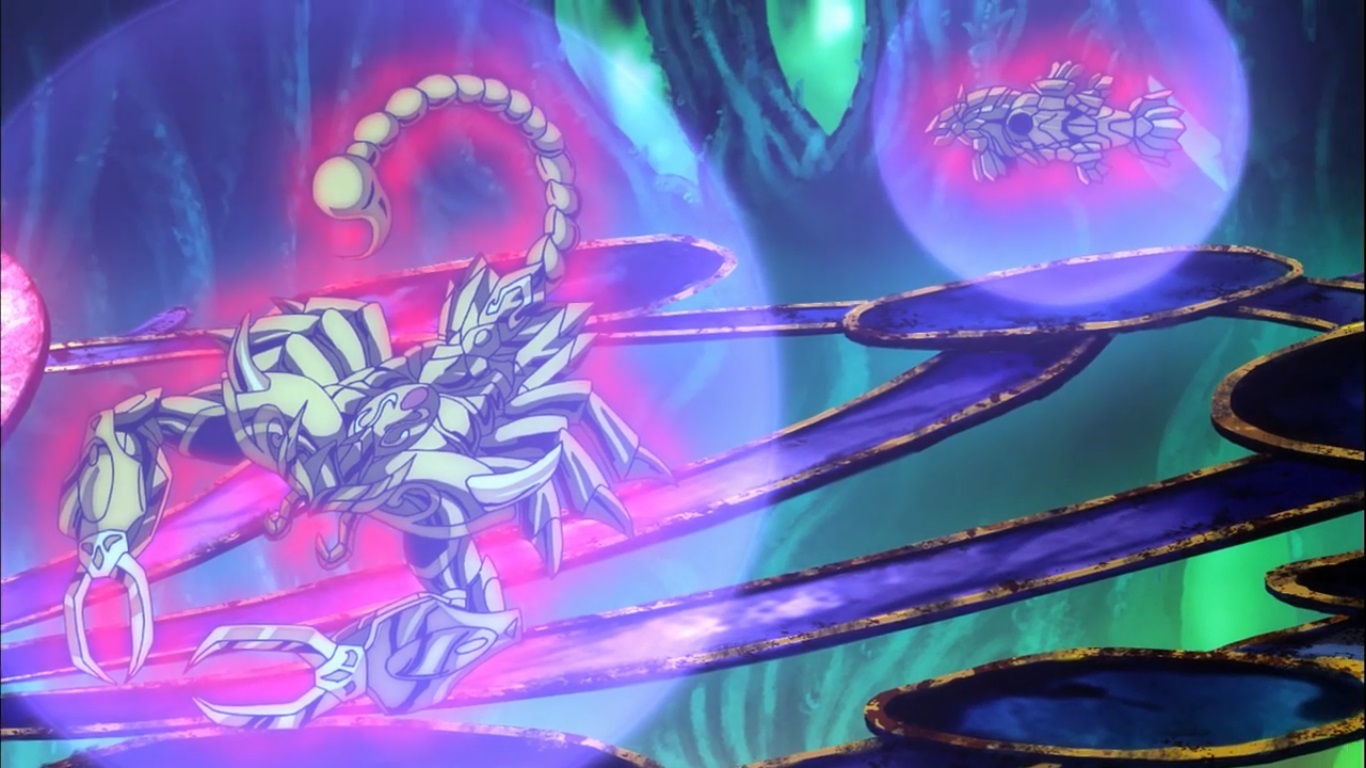
不知是否有其他朋友也一樣好奇,為何遠鏡頭畫面都只有聖衣,只有近距離特寫才能看見旁邊飄浮的人? 
劇組你們以為這是央視春晚魔術嗎?
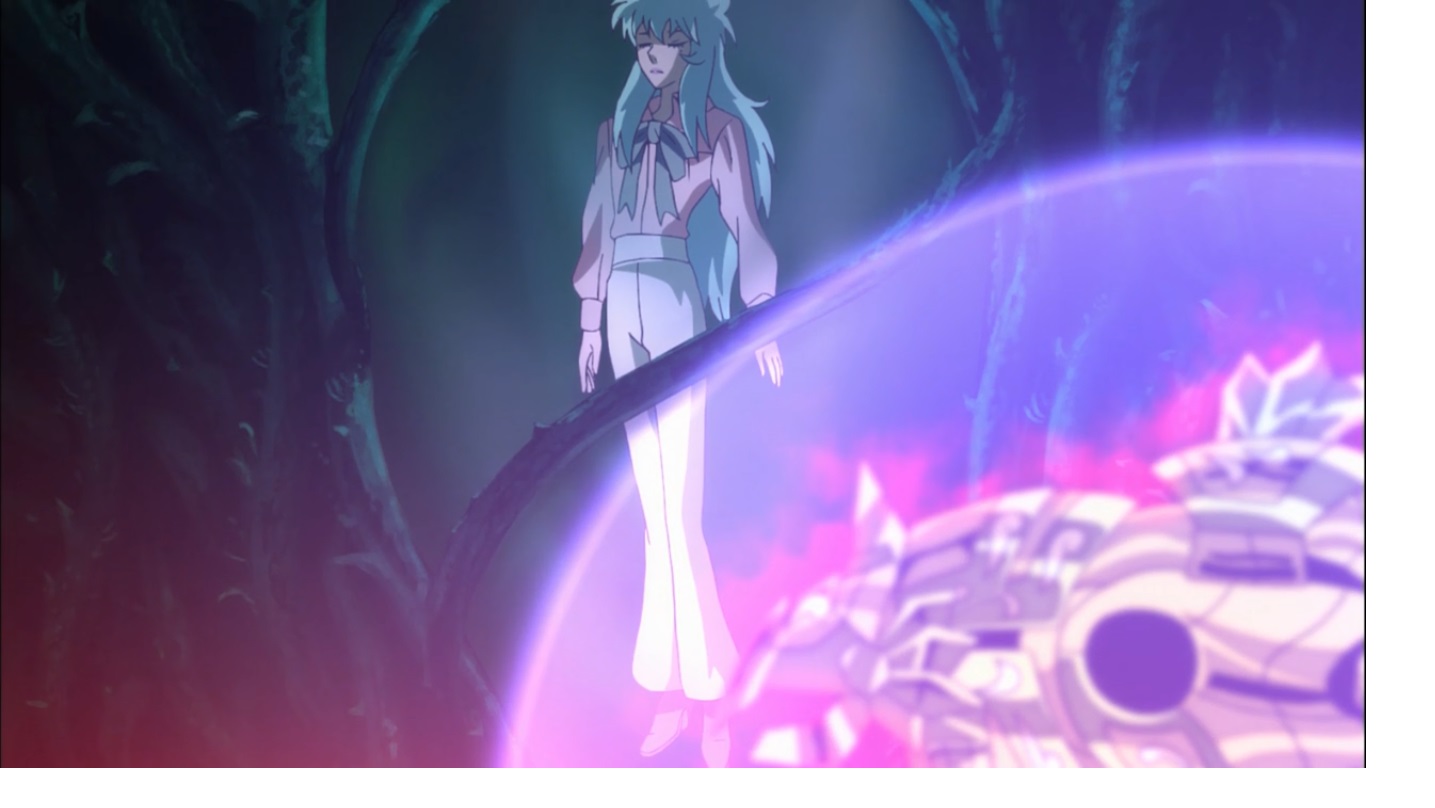
反派 BOSS 的自欺欺人
相信很多朋友唸書考試時都從親身體驗中領悟過,當內心有疑不確定答案,往往相信第一直覺都是最靠譜的抉擇。
安多雷亞斯雖然腦子動得快,查覺世界樹成長速度變慢立刻聯想到射手座,卻掩耳盜鈴不肯相信他依然有力量造成影響。
無意外的話,等後段決戰敗北時,安多大概就會和 SS 極樂淨土篇的西路費德一樣後悔當初沒有即時採取應變措施。
安多雷亞斯:"成長竟然有些遲緩了。"

安多雷亞斯:"該不會是因為那支箭吧? 想太多,怎麼可能?"
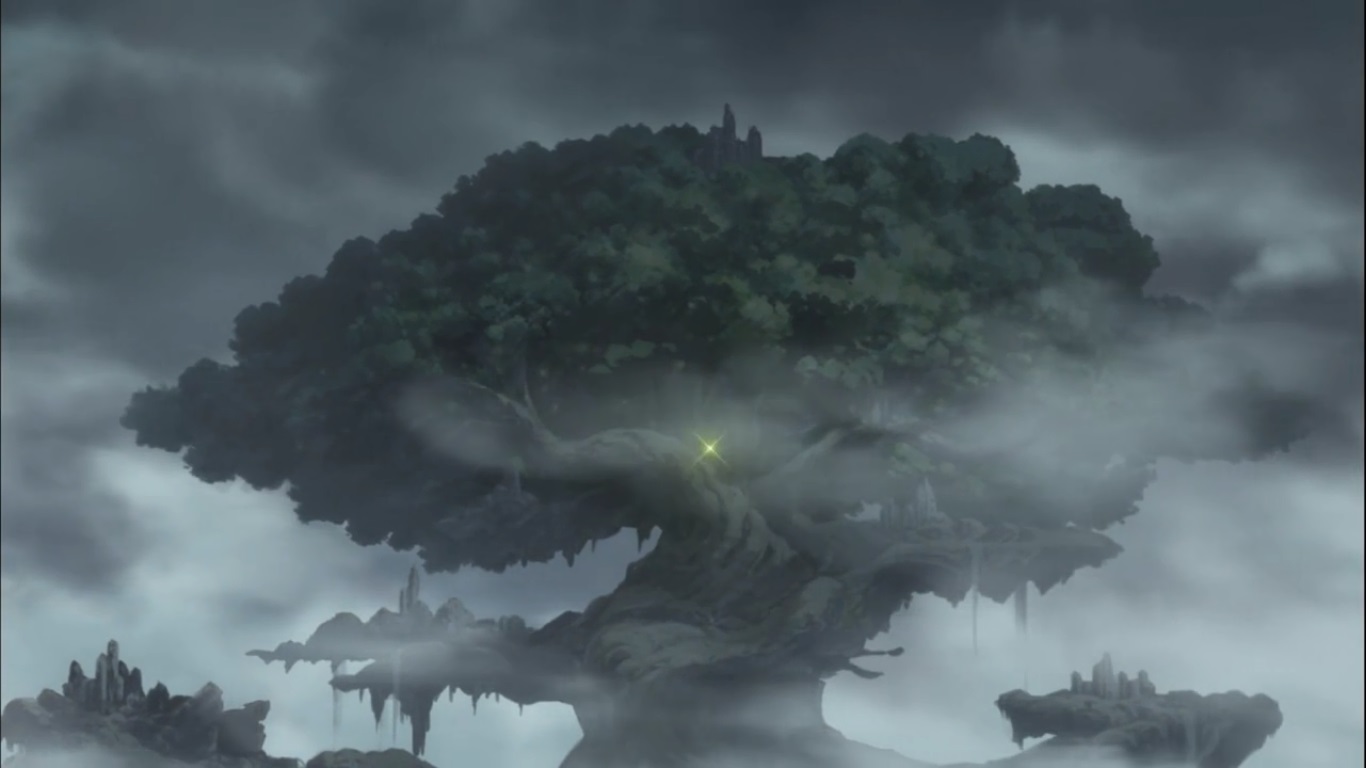
安多雷亞斯: "果 ... 果然當時 ... 當時立刻拔除那支箭的話 ..."

e) 新神鬥一哥之輕功水上飄
很多朋友看到弗洛迪轉身離開時像幽靈一樣橫著飄走後火力全開的往死裡吐槽。
其實只是他們悟性不夠,不懂得欣賞佩服高難度特技"輕功水上飄"的藝術美感。 
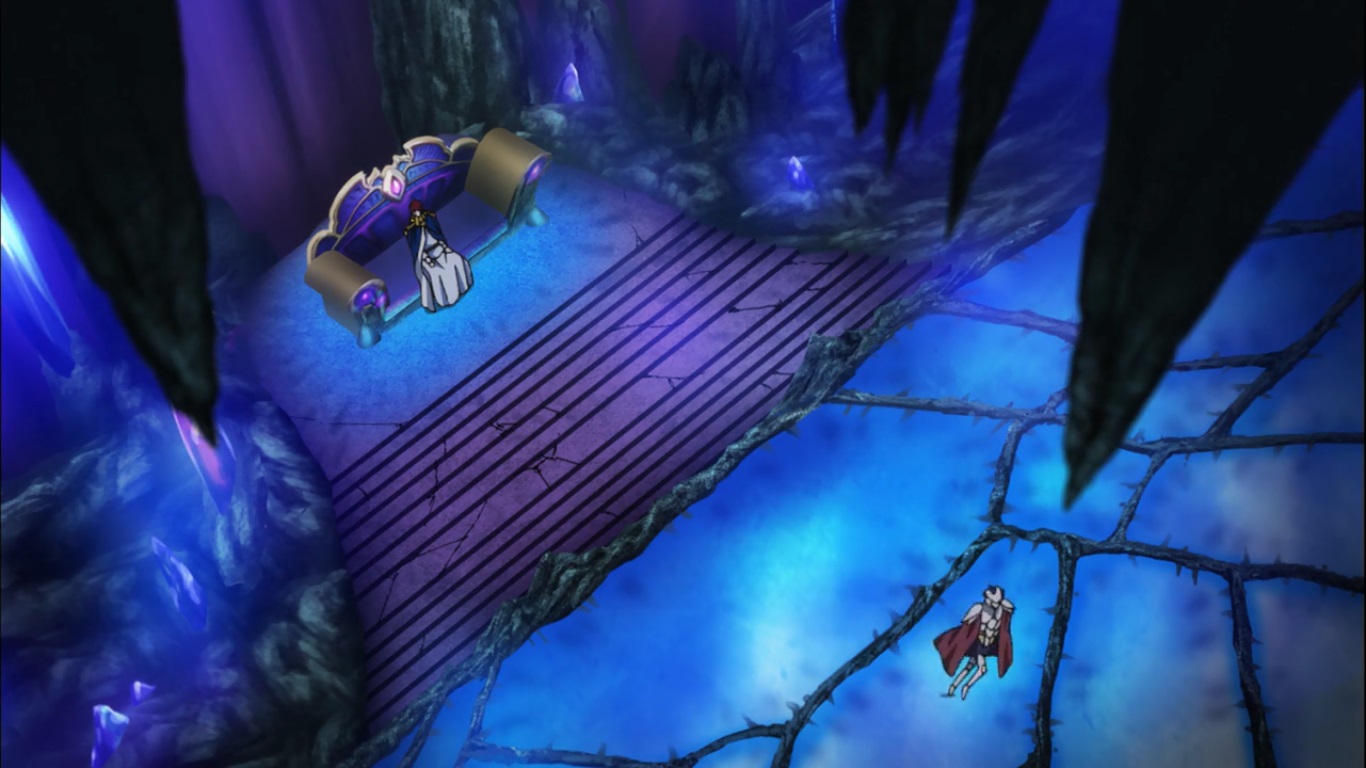
SOG 版輕功水上飄
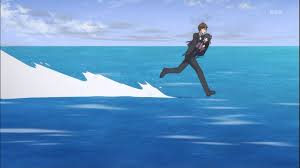
戰姬絕唱版輕功水上飄
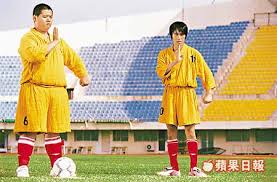
寫實版輕功水上飄 1

寫實版輕功水上飄 2
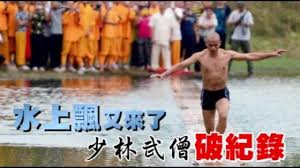
寫實版輕功水上飄 3
f) 新奧丁藍寶石與新神鬥士喊話
SS TV 版北歐篇奧丁藍寶石

SOG 新奧丁藍寶石
期待"超神鬥衣 (Super God Robe)"的朋友們可能要失望了,因為看情況大概就是直接"寶石舊換新"就完成外掛升級。

不過等後段決戰時極有可能看到奧丁鬥衣再現,只是可能改由反派 BOSS 穿,而且升級後外貌改變。
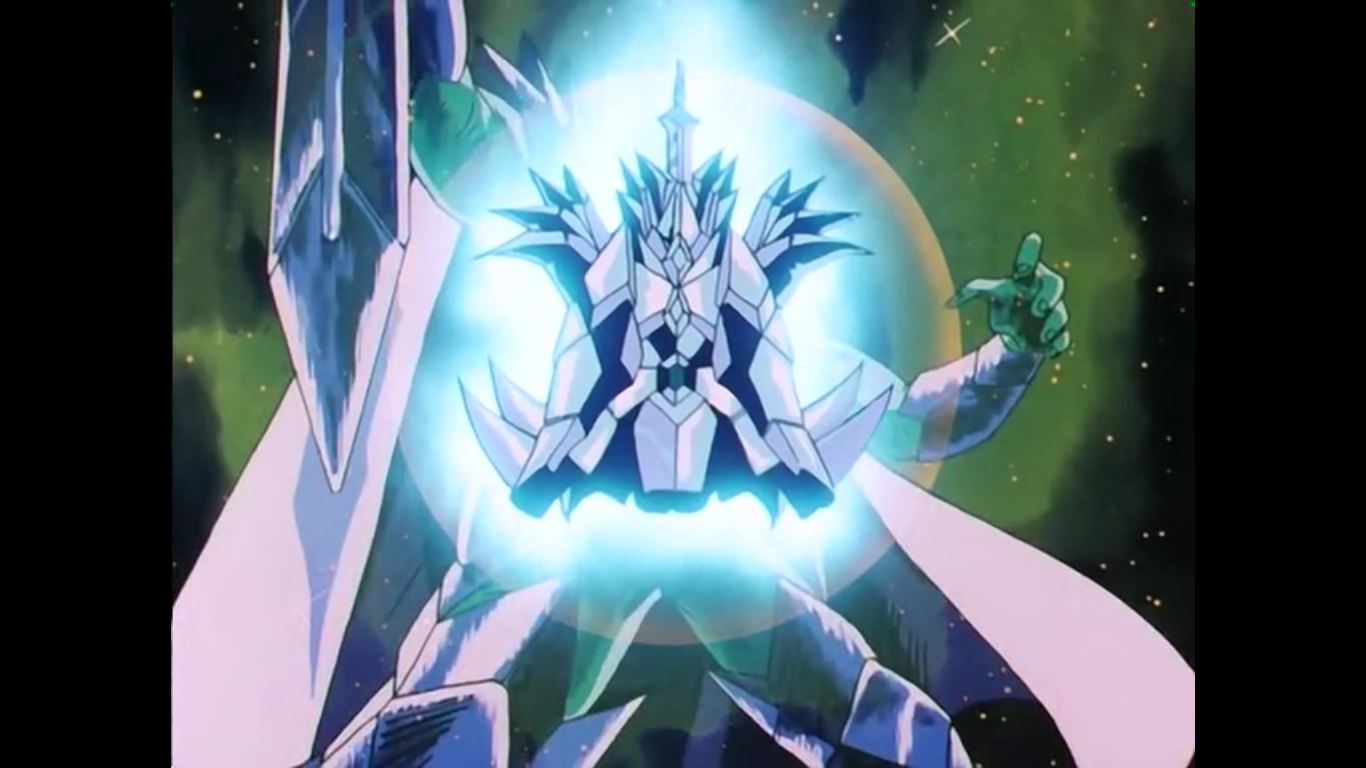
好奇問一下,除了我以外,有其他人也覺得七人喊為了仙宮無所謂但高呼奧丁時顯得特別假嗎?
而且人家聖鬥士都是擊拳打氣,你們幾個是有多懶? 感覺就像坐在沙發看電視,但按遙控器用腳趾就不必動手。
這個畫面令我聯想到 OMG 刻鬥士四天王擊劍高呼帕拉斯的橋段。
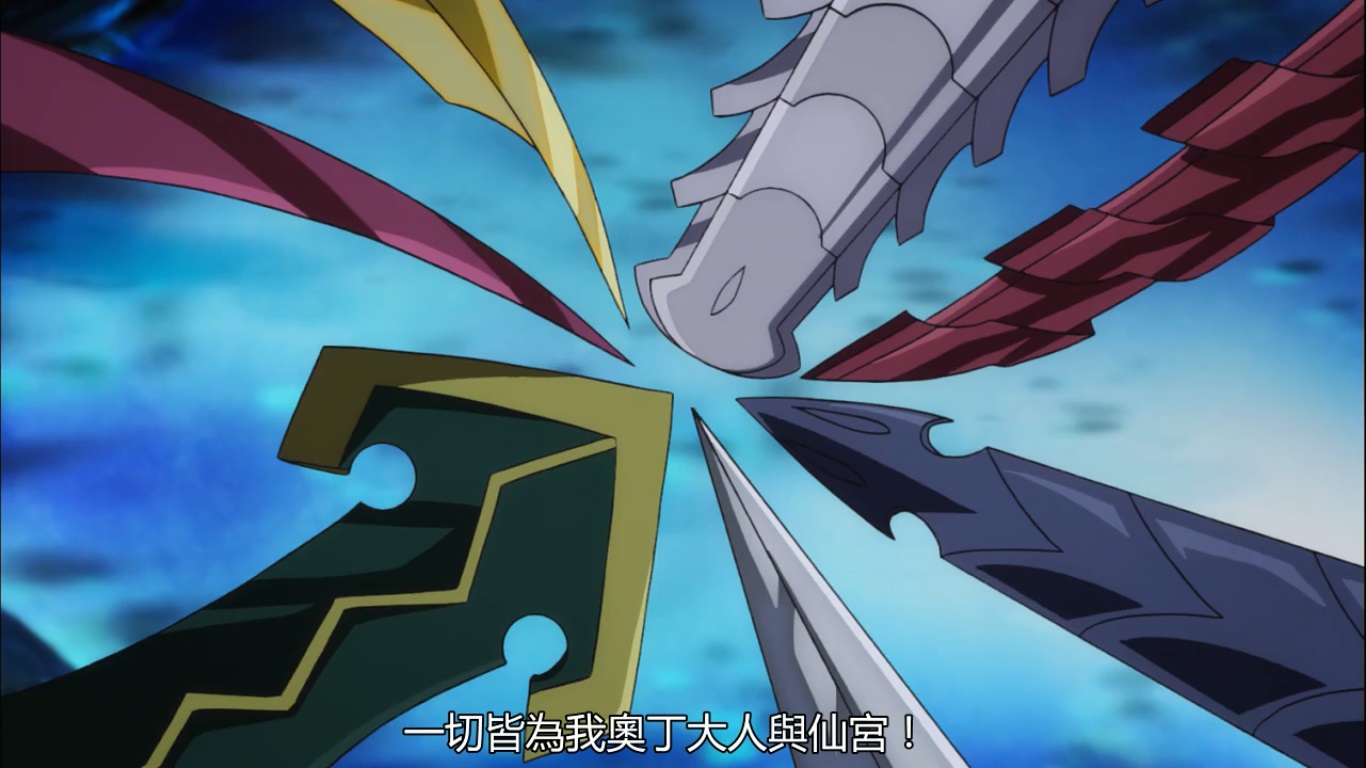
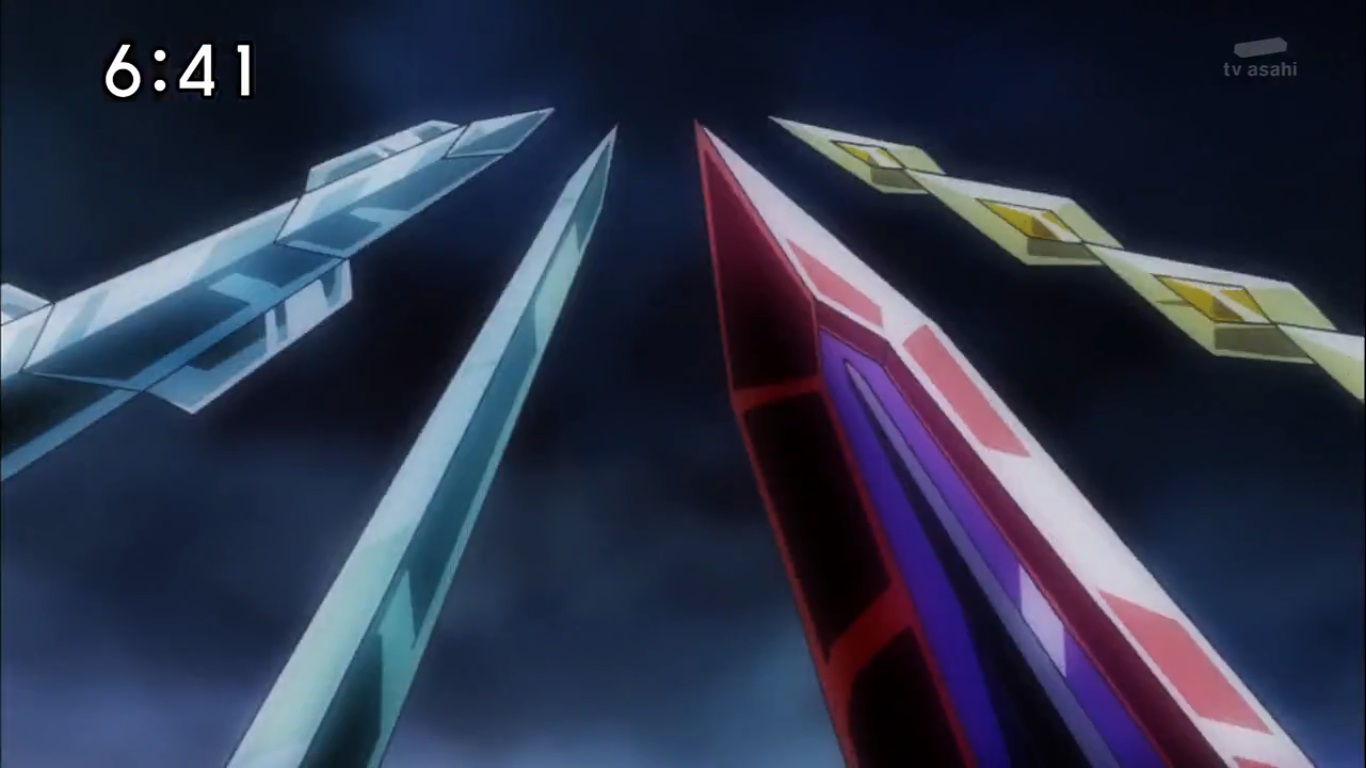
g) 七界之屋介紹
不知為何七界之屋令我聯想到魔神英雄傳裡創界山和星界山的七個界層。

新魔神英雄傳的星界山

智慧之屋 - 瓦特海姆
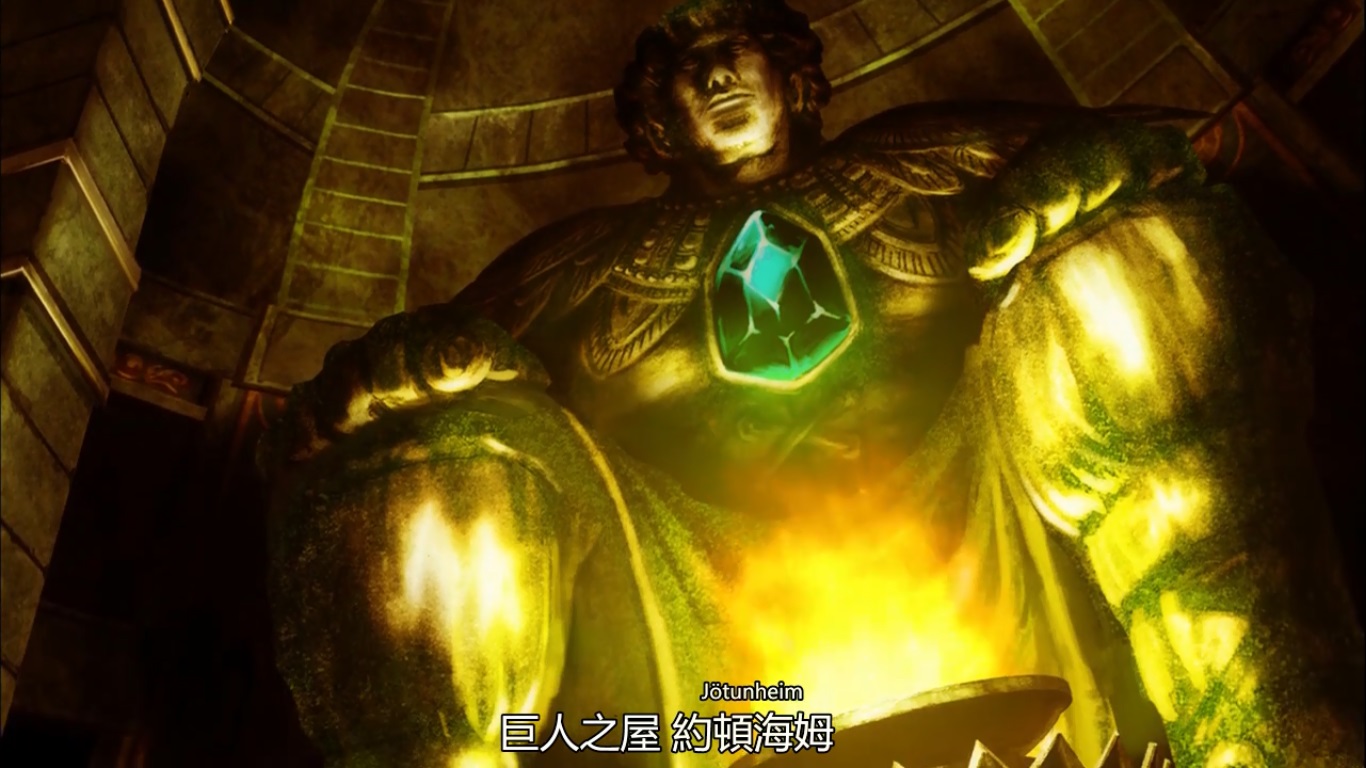
巨人之屋 - 約頓海姆
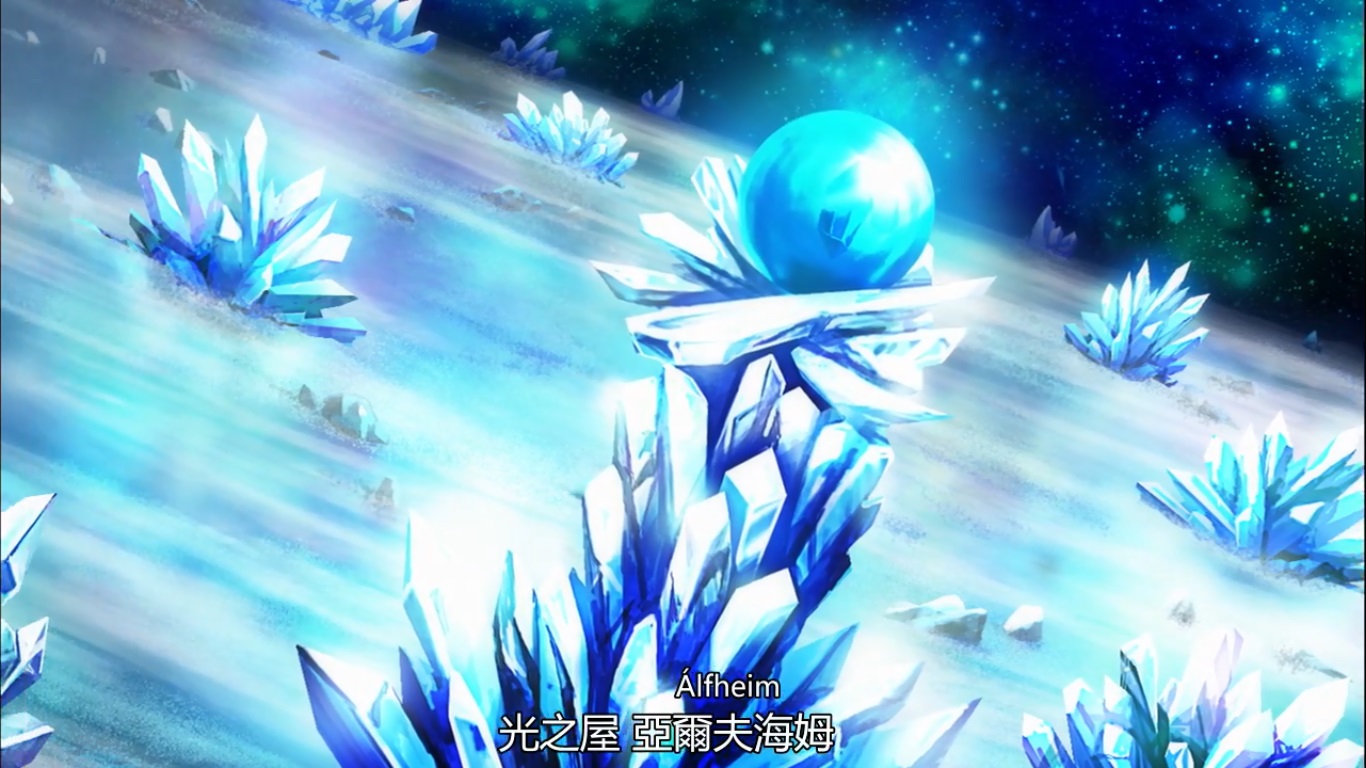
光之屋 - 亞爾夫海姆

死者之屋 - 赫爾海姆
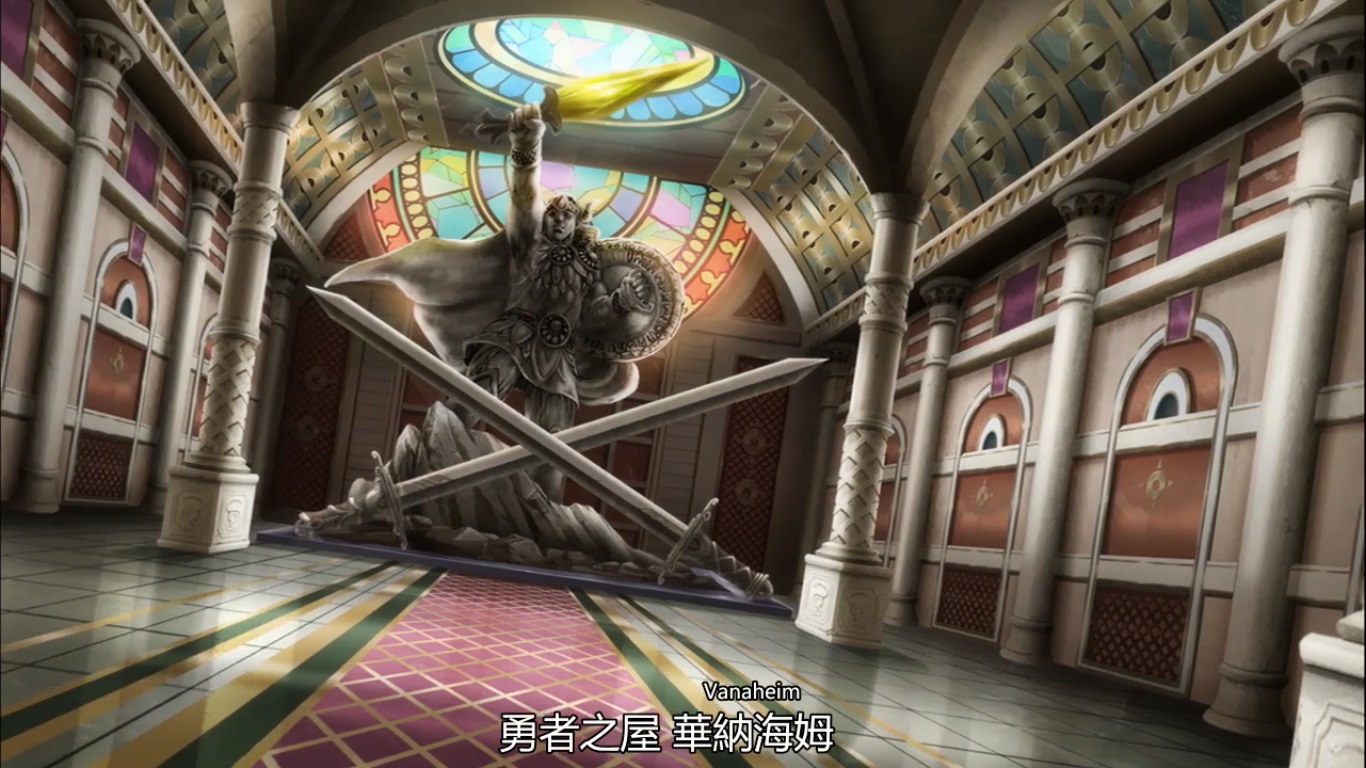
勇者之屋 - 華納海姆
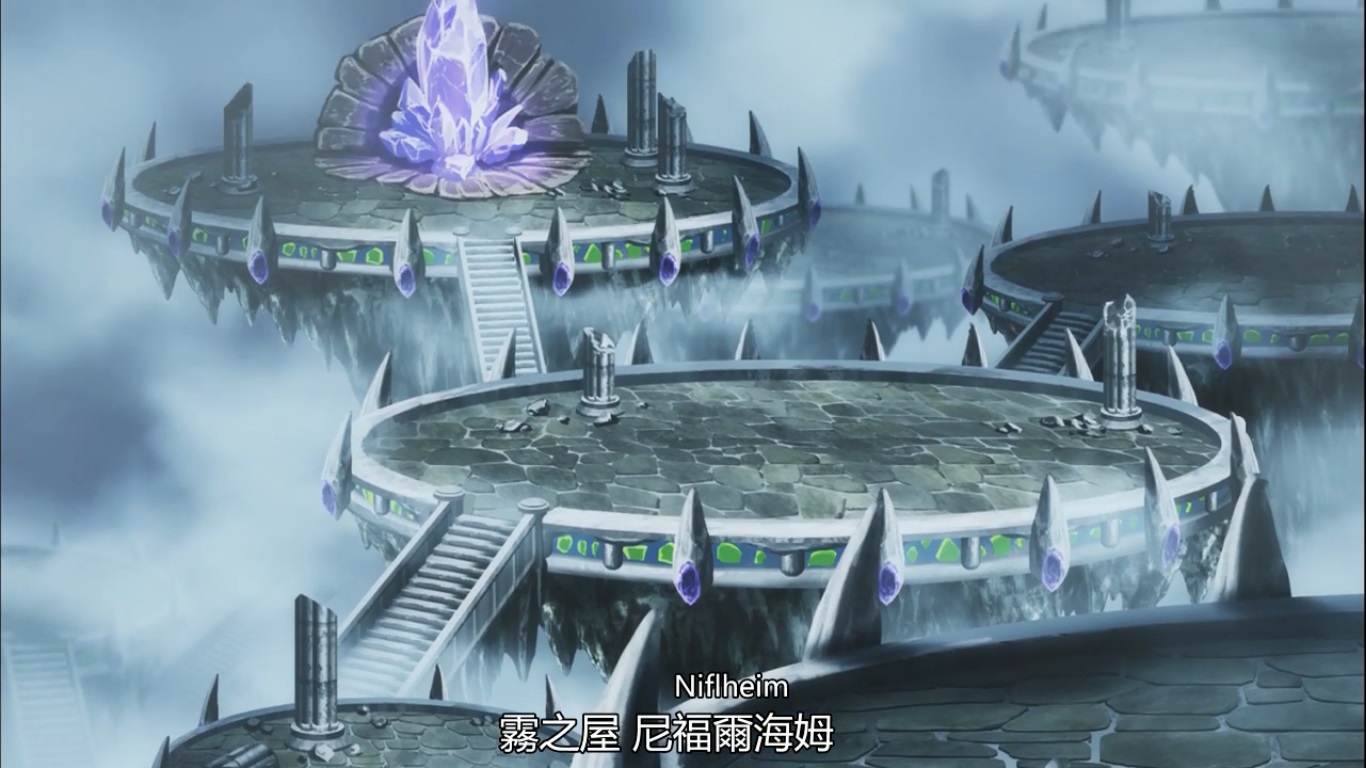
霧之屋 - 尼福爾海姆
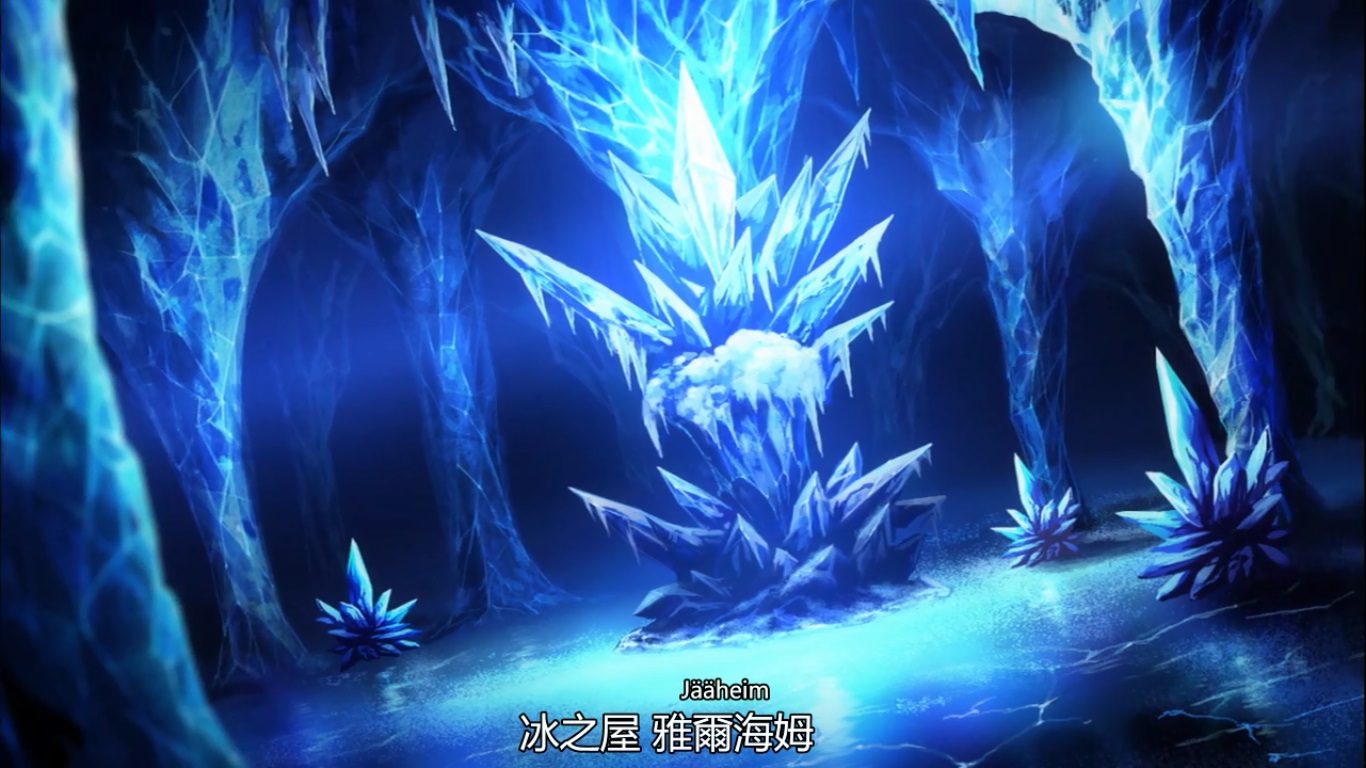
冰之屋 - 雅爾海姆
VI. 沉睡的獅子 - 聖鬥士之偷情寶鑑 Part V
(世界之樹內部)
VII. 聖鬥士的元祖楷模
艾歐洛斯: "當年 SS 冥界篇我被排擠沒得穿時髦的死人戲服,現在當然要趁機一償宿願。"
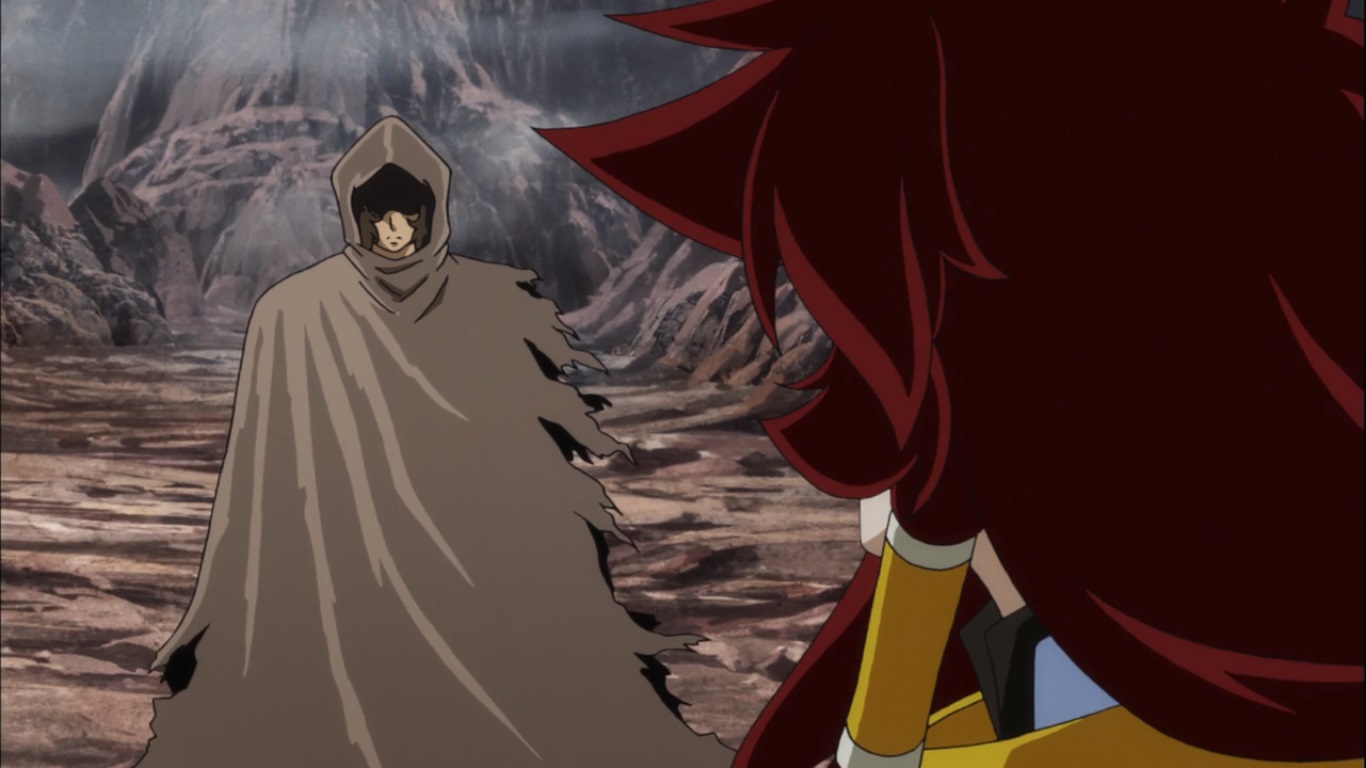

艾歐洛斯: "(撒加腔) 哼,不管到哪裡都只會模仿我艾歐洛斯嗎?“

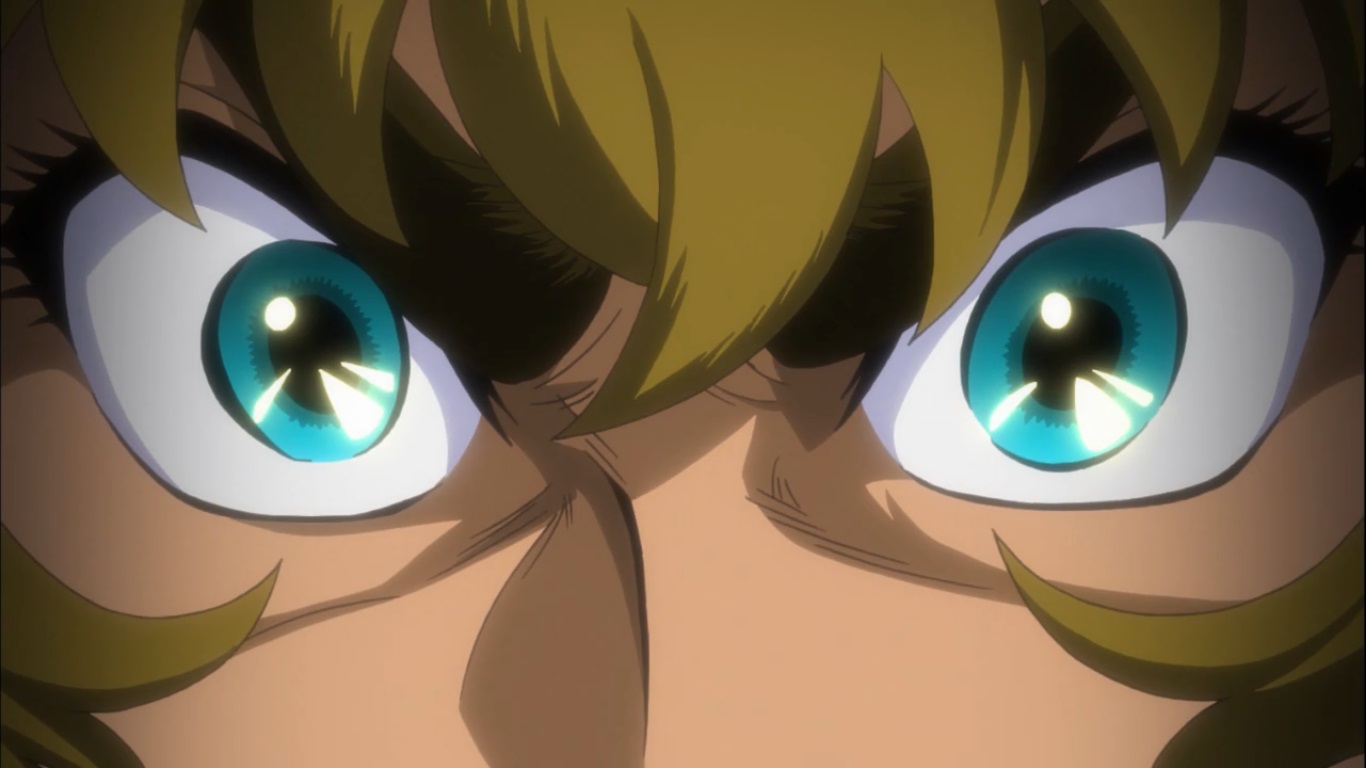
還記得在 SS TV 版第一次見到射手座聖衣箱發光時,從裡面出來的是一輝。

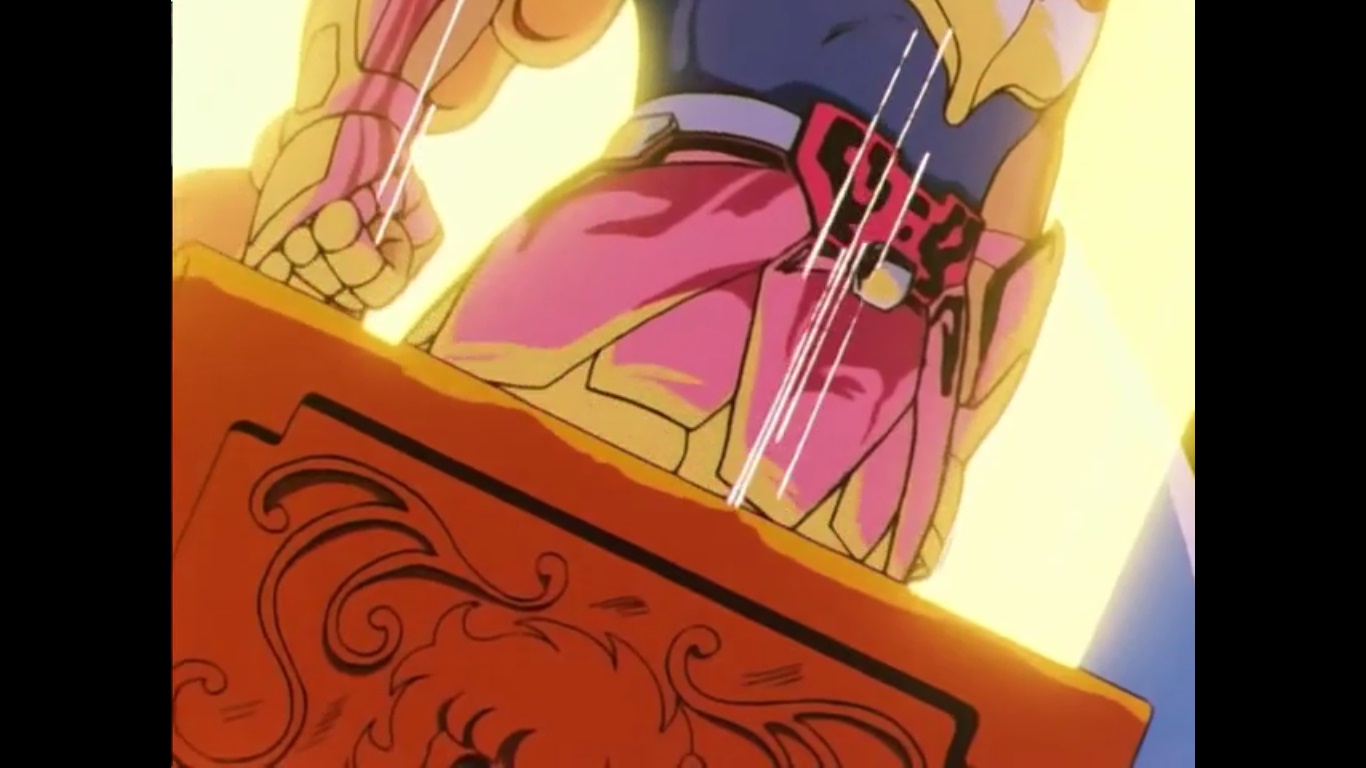
SOG 射手座聖衣組裝形態的上色部份處理的比 SS TV 版 + OMG 更優。
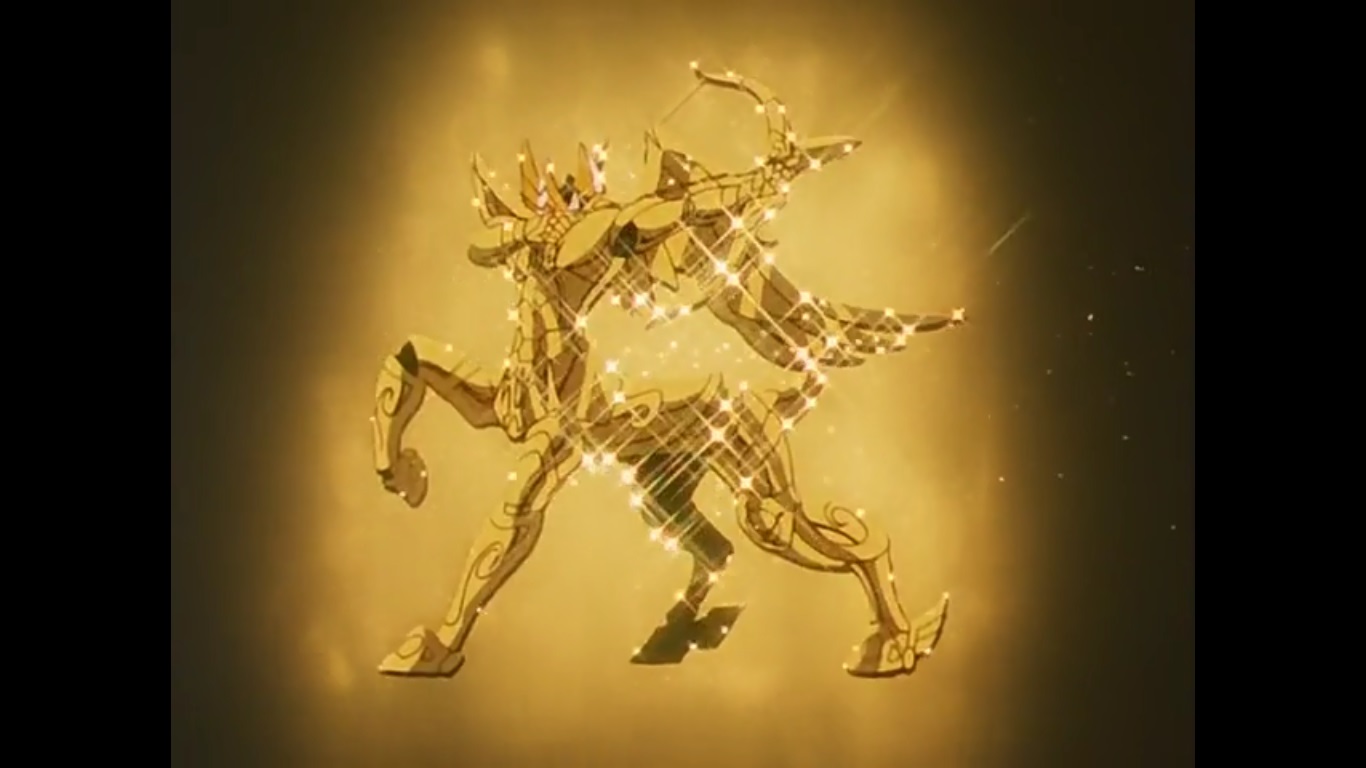
SS TV 版射手座聖衣組裝形態
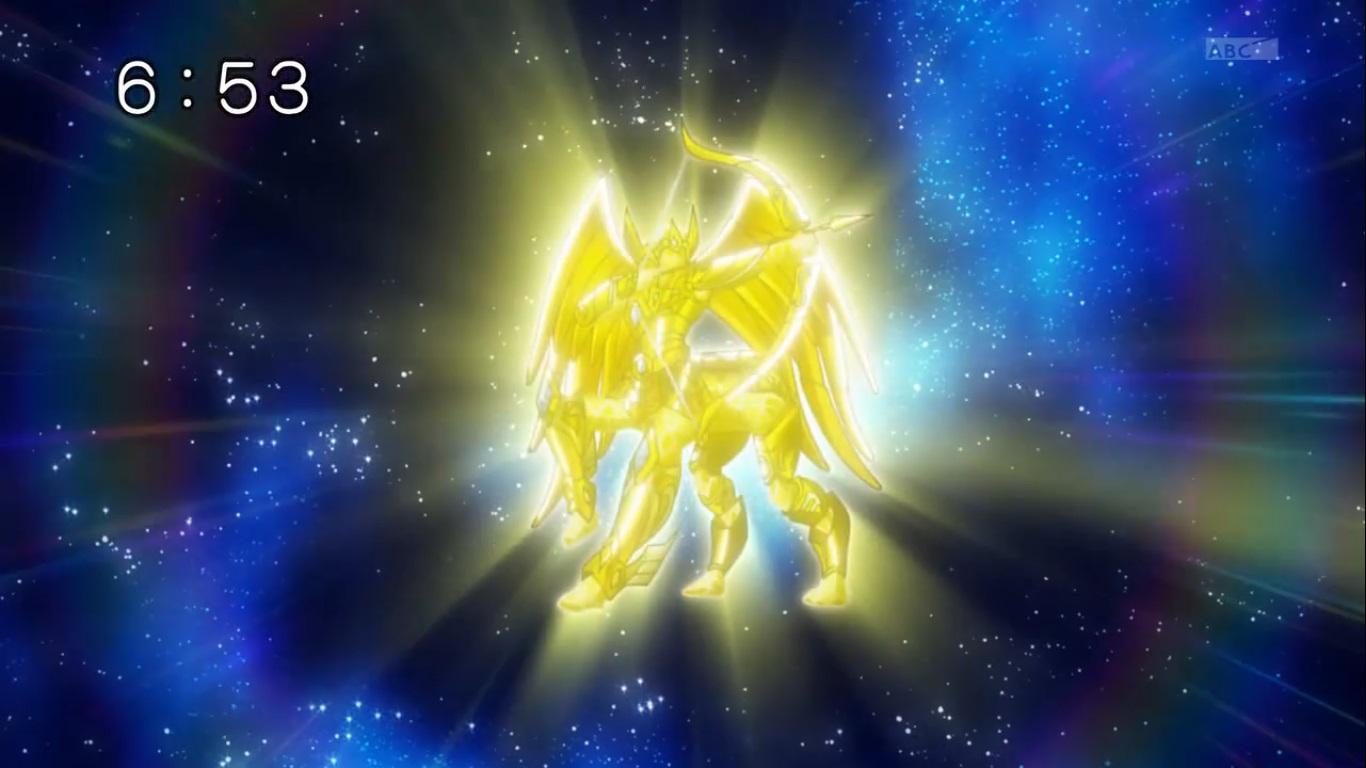
OMG 版射手座聖衣組裝形態
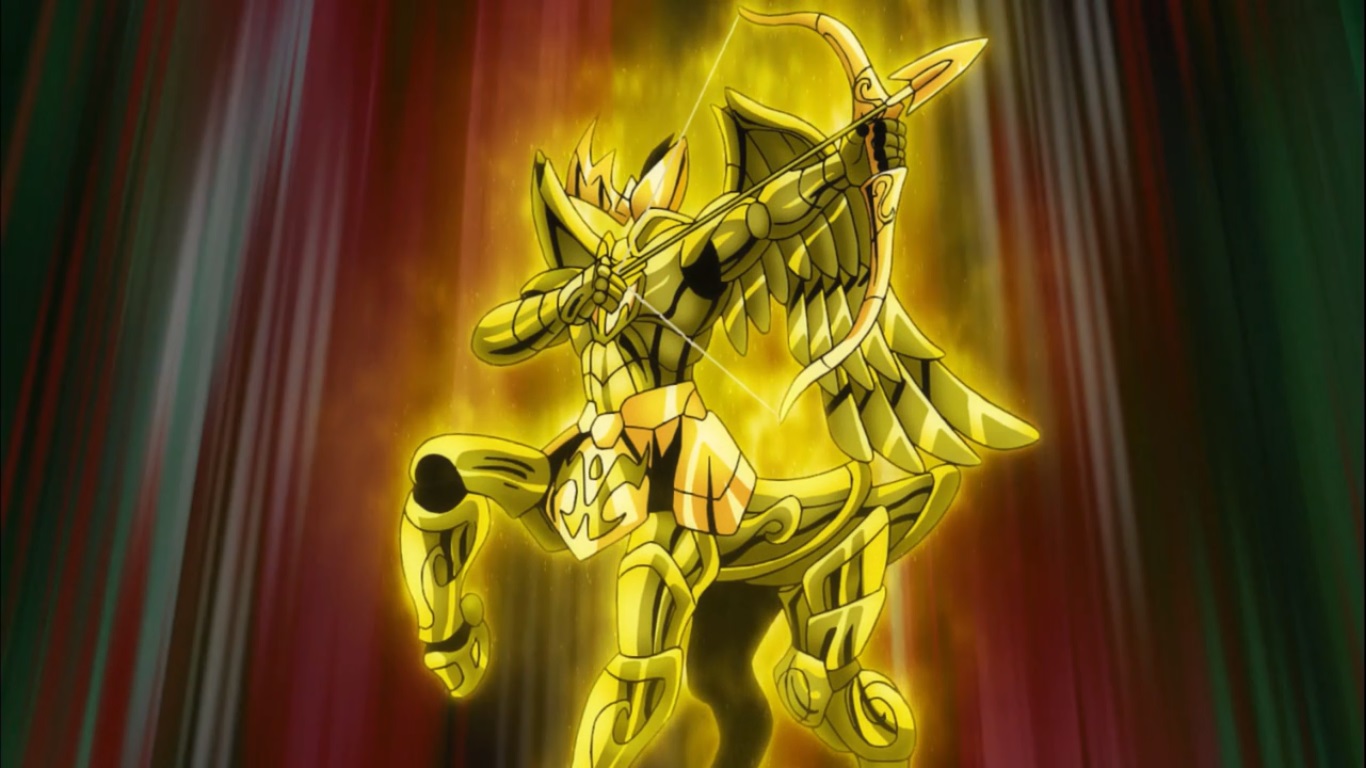
SOG 版射手座聖衣組裝形態
既然劇組沒替原創的連發弓箭取招名,就讓 LZ 來代勞一下好了。

"人馬流星箭 (Sagittarius Ryu Sei Ken)!!" (圍觀群眾:爛透了!!)
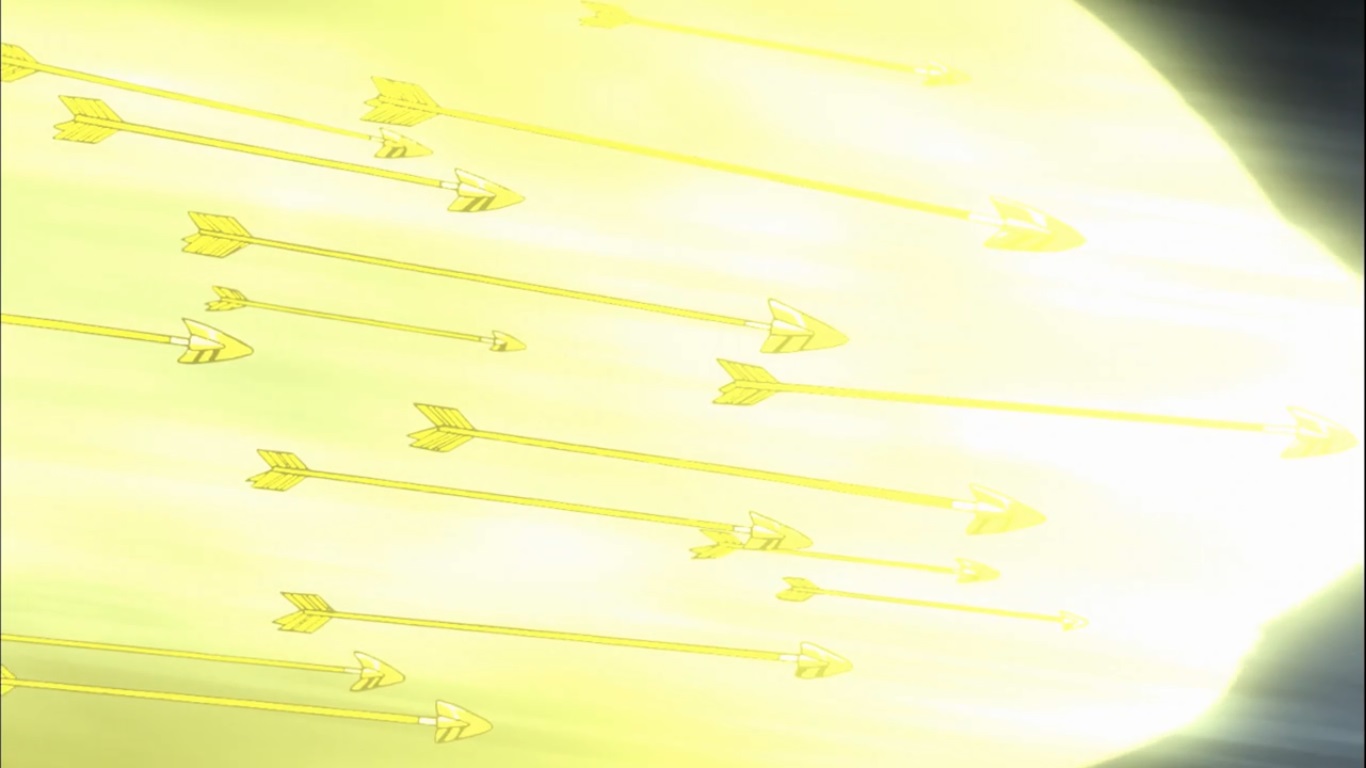
LZ: "射手既然貌似偷偷加入了科學忍者隊,不妨展現一下火鳥功給大家看。" 
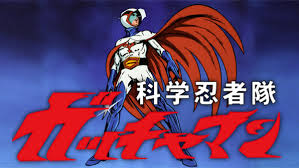

SOG 版射手座星座背景
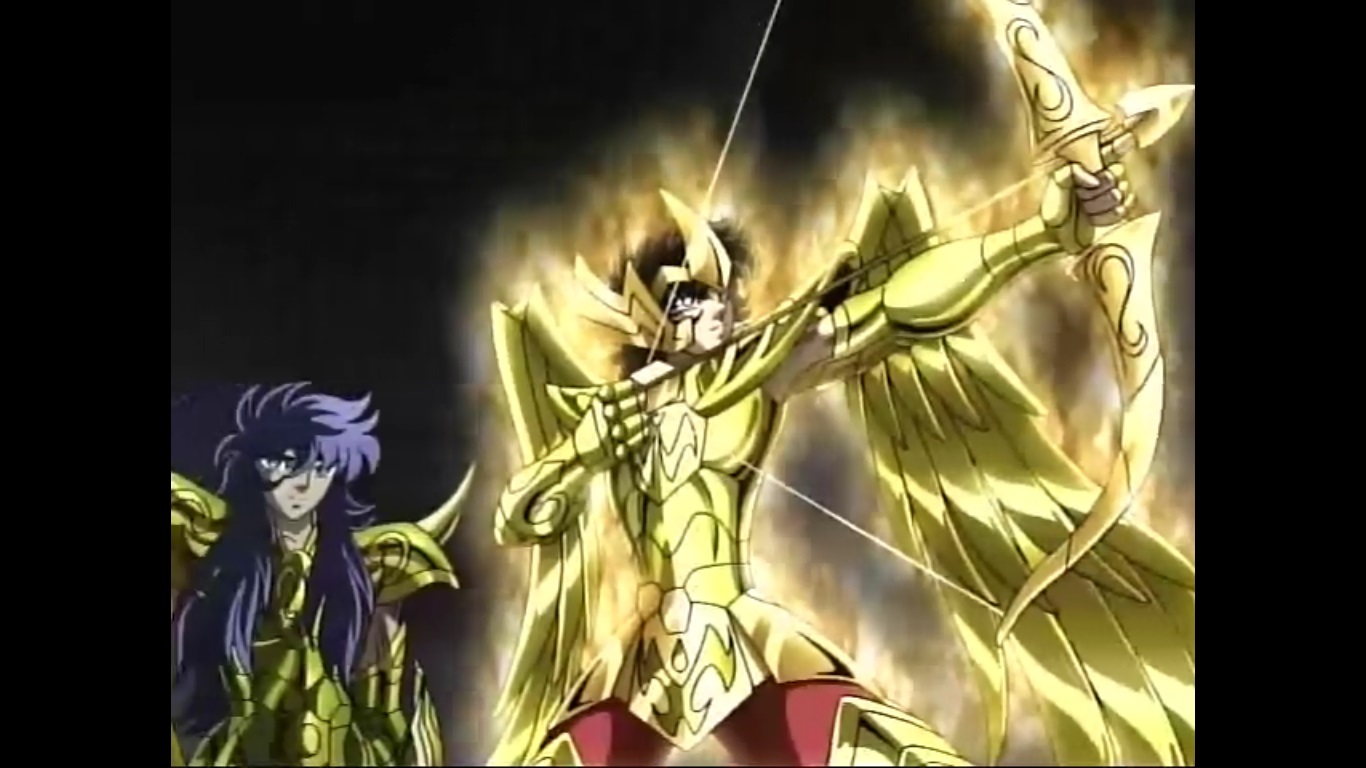
SS TV 版射手座聖衣
LZ: "如果只是懶得畫星座背景,直接跟雙子座一樣跳過就行,何必遮得如此辛苦?" 
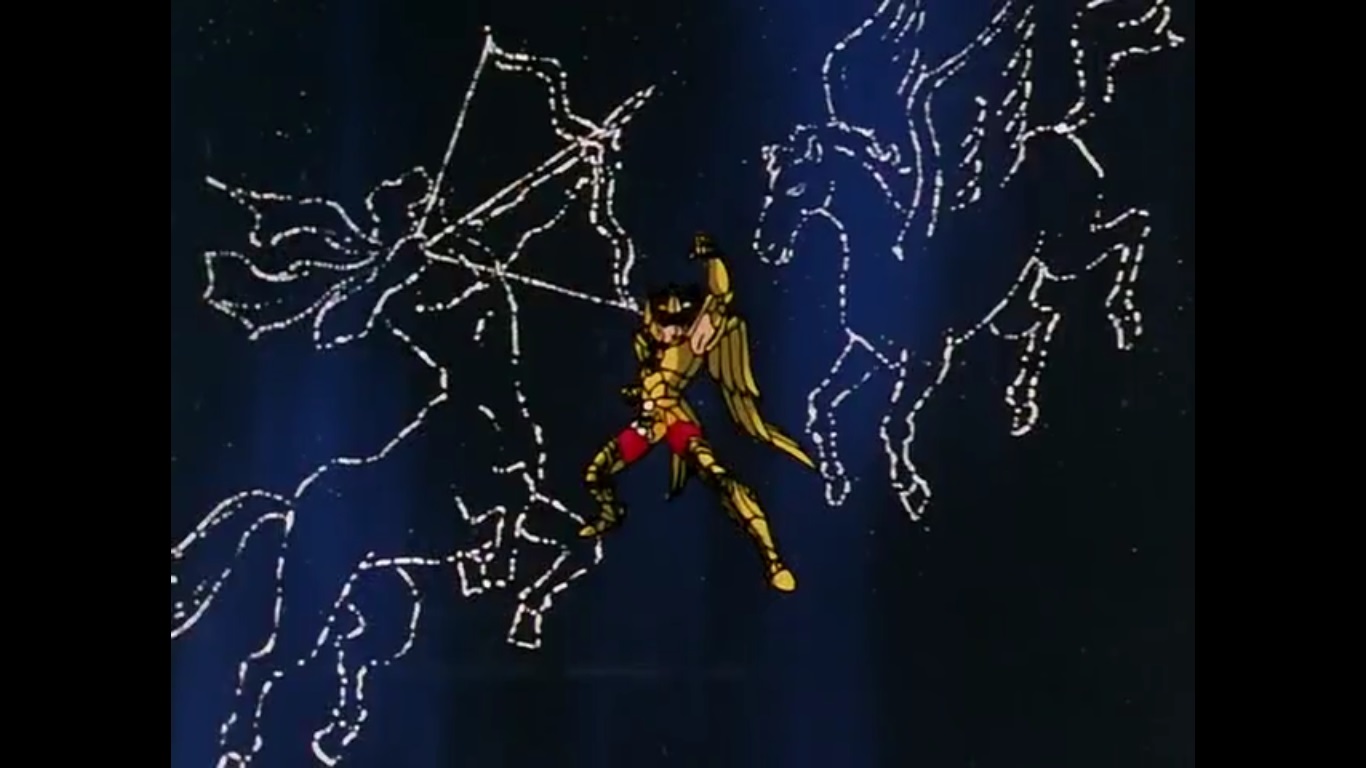
SS TV 版射手座星座背景
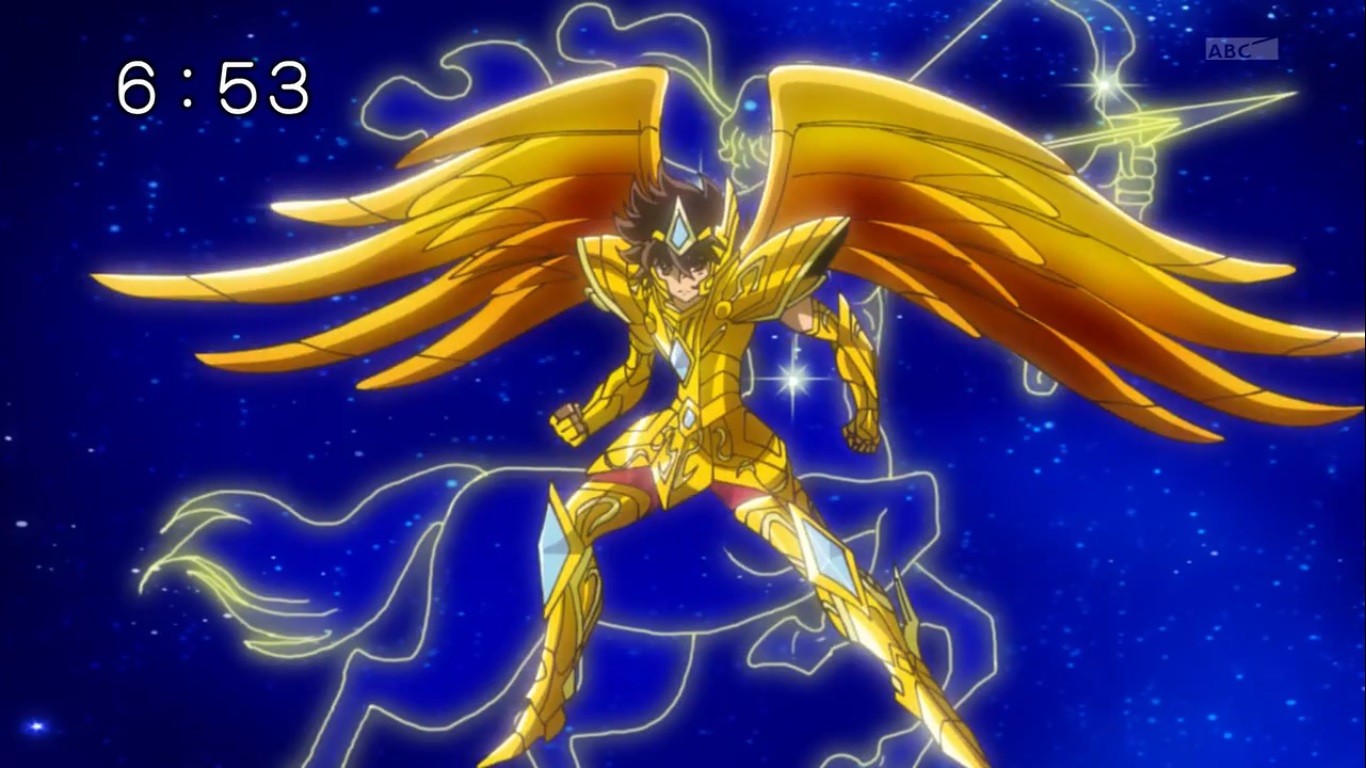
OMG 版射手座星座背景
雖然 SOG 開播第一話已經聽出屋良有作的聲線明顯更加老化,真的沒想到會變成喊招時有氣無力的感覺,甚至偶爾會卡到痰。(人家今年 67 你想怎樣? 又不是所有聲優都像古谷徹一樣金鋼不壞之嗓,而且就連他也稍微開始退化了一些)
好奇問一下,除了我以外有其他人一樣納悶射手招牌的"燃燒吧,我的小宇宙!!"之後為何突然喊出"嗚喔喔喔喔"嗎? 
看生肉時還以為他拉弓搭箭時又不小心中了對方攻擊還怎樣。
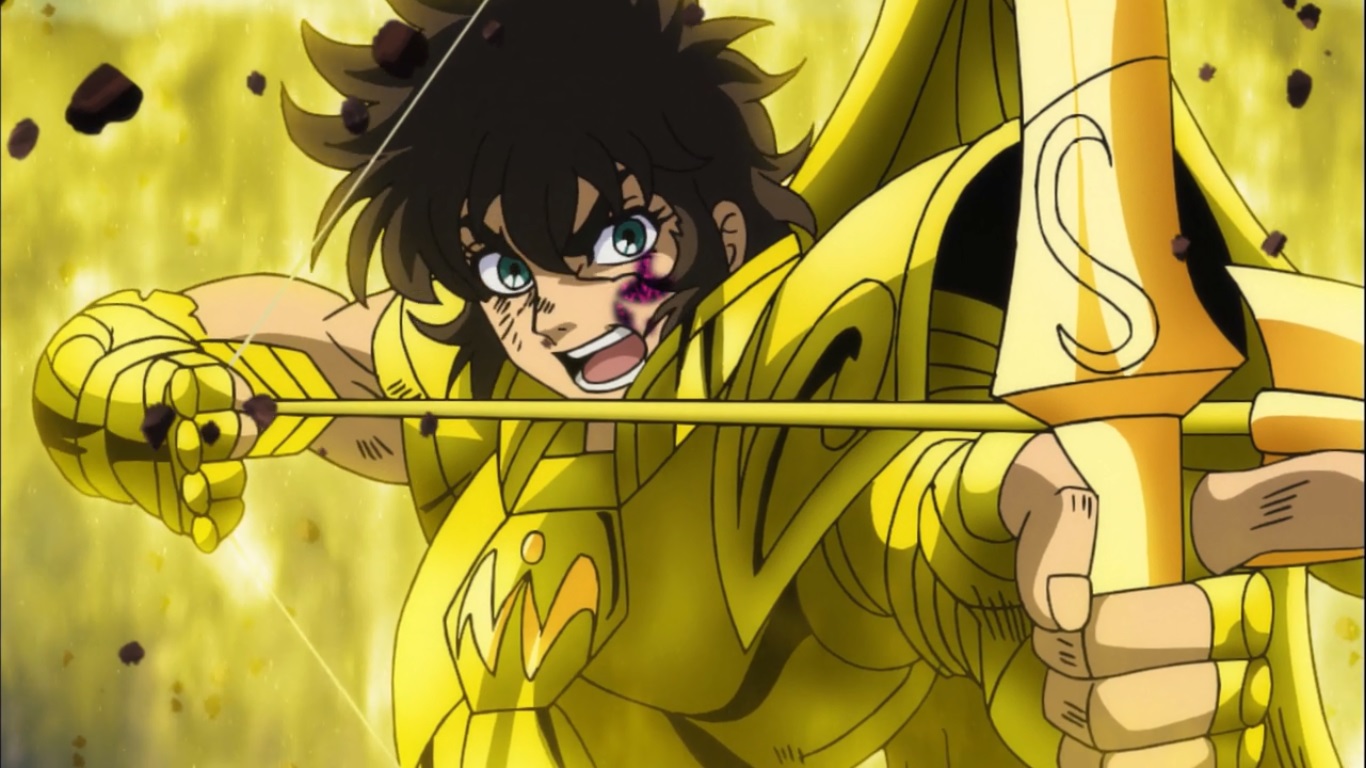
搞了半天,原來 SOG 射手座神聖衣的黃金箭就是將 OMG 的兩種箭頭設計融合。
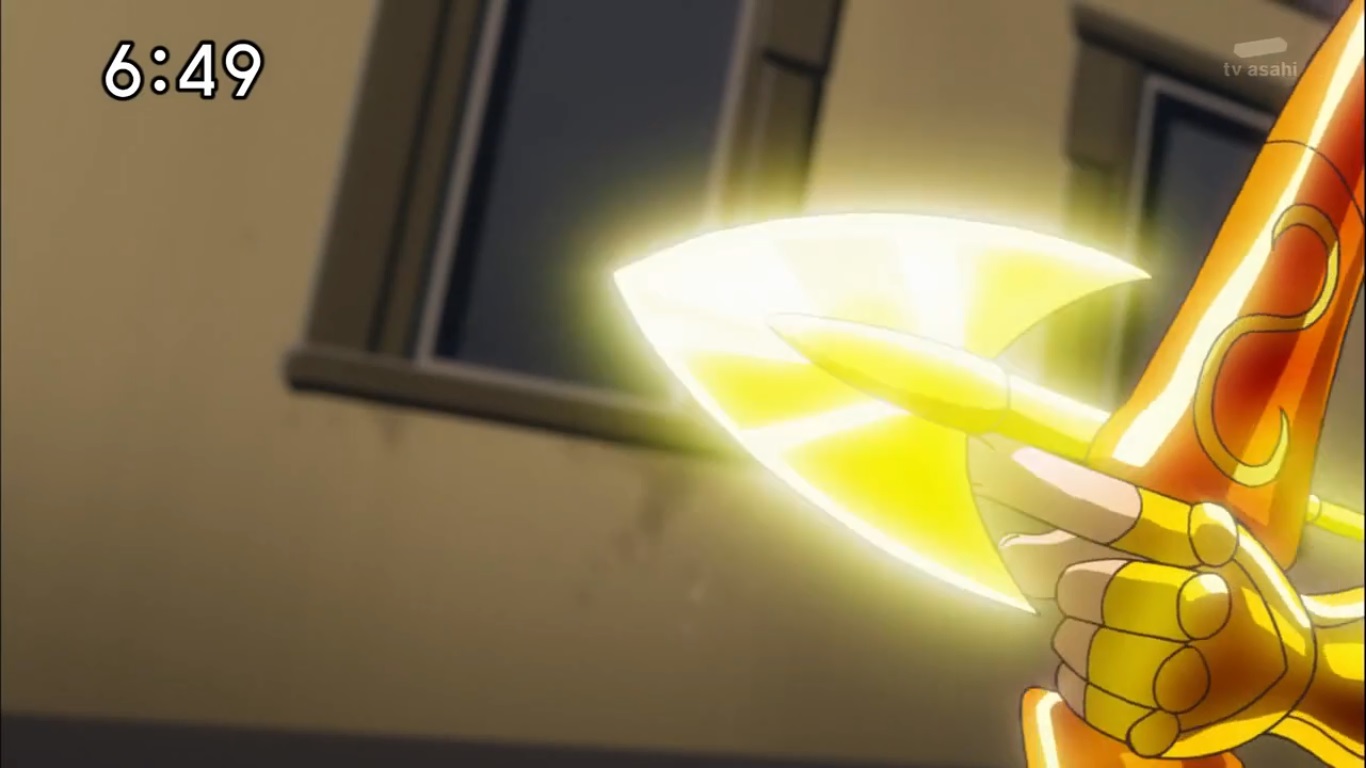

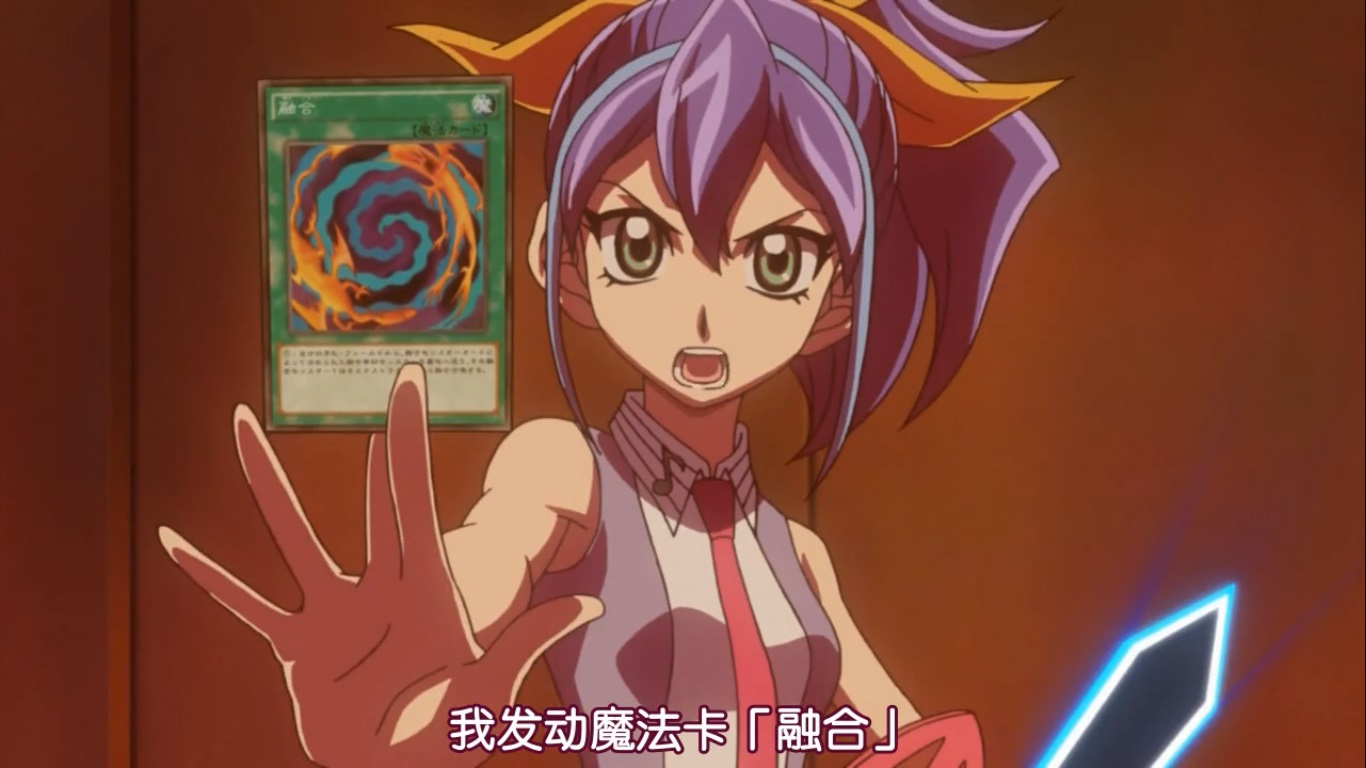
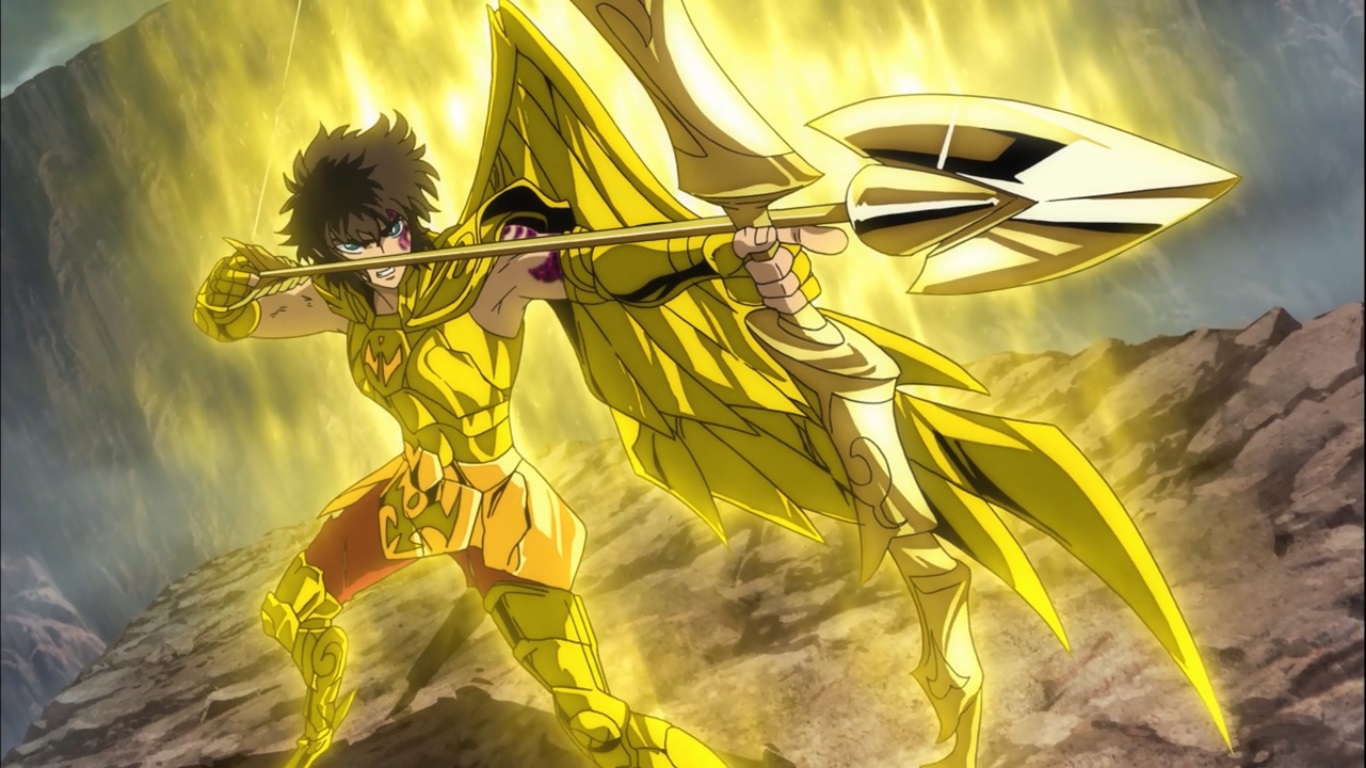
VIII. 聖衣修復師/勇猛的野牛/善惡之秤/忠誠的聖劍
戰鬥畫面的環保回收
給你們兩分鐘考慮,以下畫面哪一張是獅子座出招,哪一張是白羊座出招?  (不用懷疑,100% 保證是不同集截來的圖)
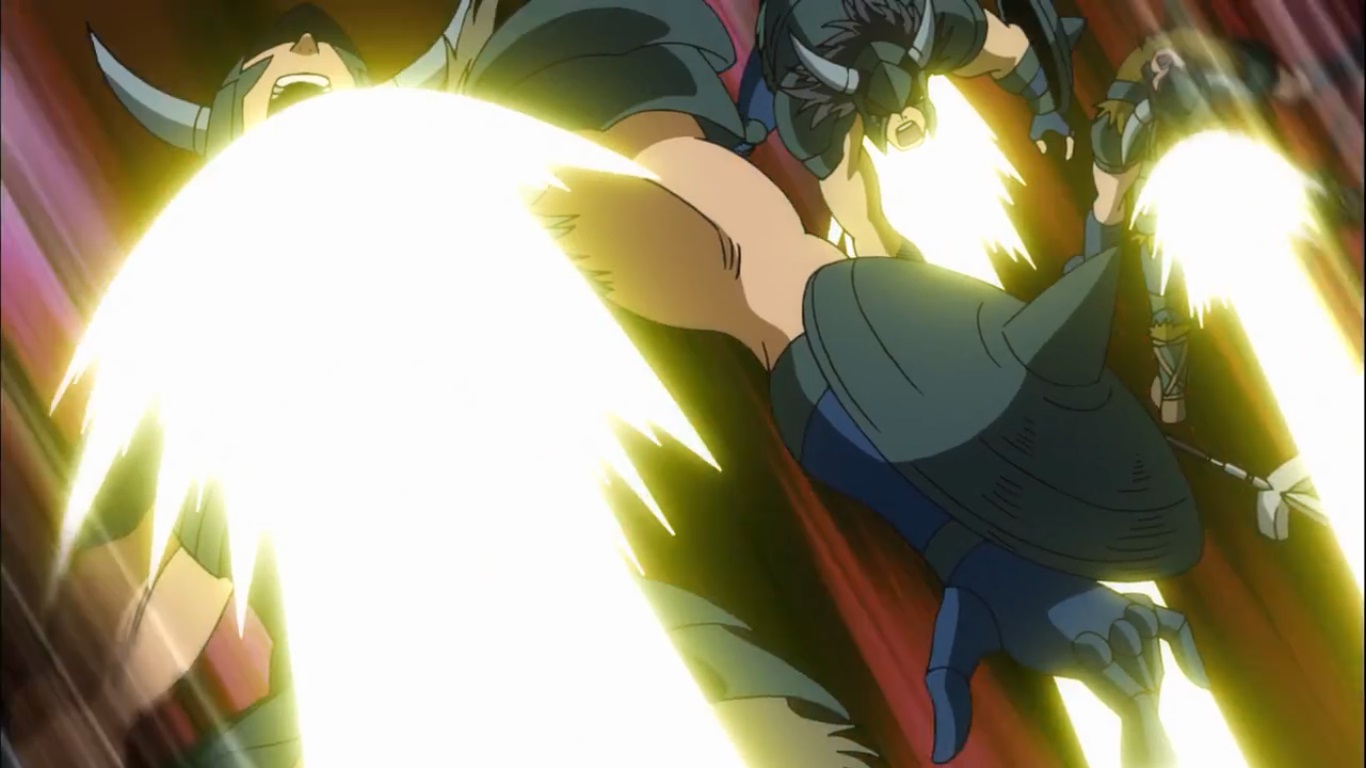

黃金同伴會合與打氣喊話
艾歐里亞:"老實承認吧,你們三人之中誰最崩?"
童虎: "(舉手) 是老夫!!"
穆 + 阿魯迪巴: "不過我們也沒好到哪裡去。"
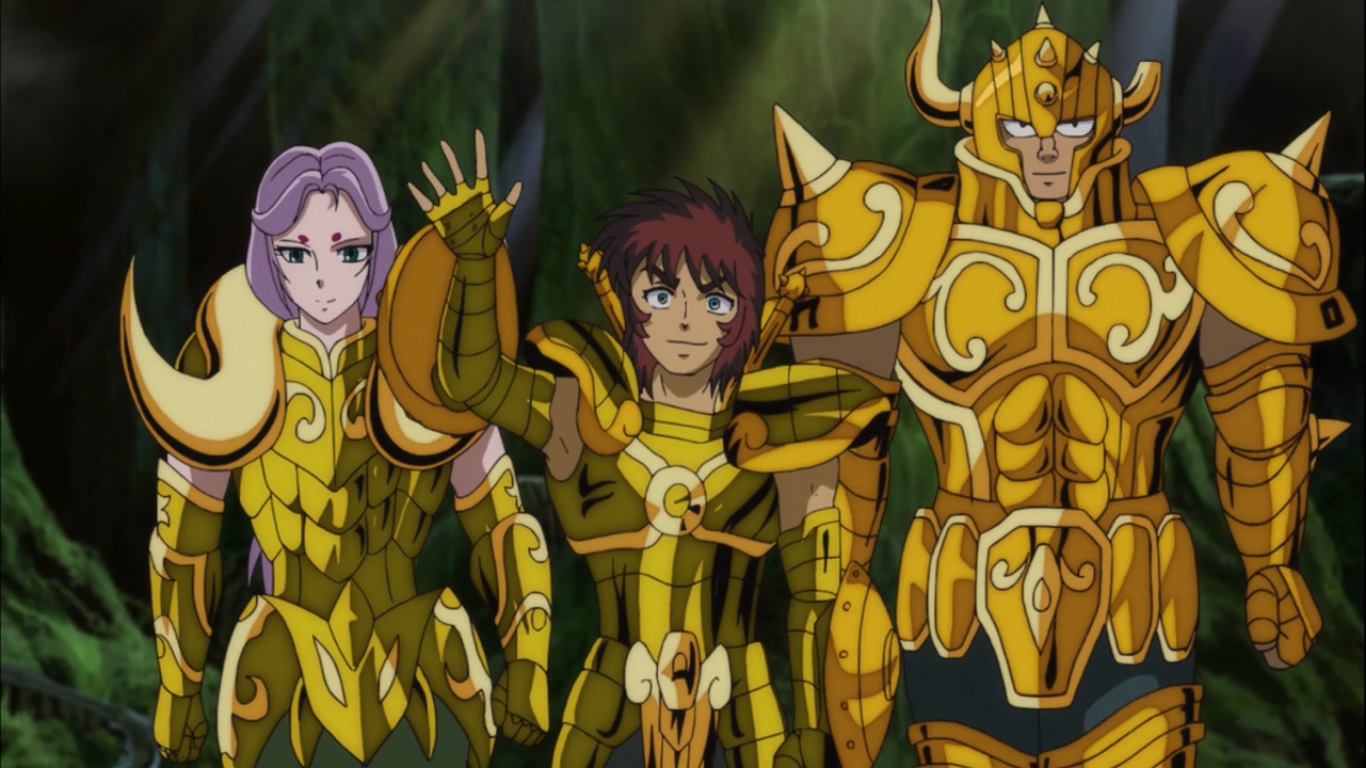
經典的聖鬥士擊拳打氣喊話畫面重現

SOG 版

OMG 版
IX. 最接近神的男人/神的化身
LZ: "沙加在洞裡打坐太久想跑步伸展一下我能夠理解,但撒加現在情況危急,你又能夠自由用 AD 開任意門,不直接瞬移在這裡保持隊形跑步幹嘛?"
沙加: "撒加,我才剛拿到劇透從洞窟出發,你離世界樹比較近你先趕去支援吧。"

撒加: "笨蛋,我還沒秀過便服,越早抵達越危險,不然我開 AD 早就到了。"


|